About 67 years ago, aviation was changed forever in America when Boeing launched its iconic 707. Boeing wasn’t alone, and soon after, America’s first-generation jet airliners also included the legendary Douglas DC-8. Suddenly, far-flung destinations seemed much closer thanks to the raw speed and power provided by jet power. Aviation wouldn’t be the same without these jets. Several decades later, the Douglas DC-8 has long been out of passenger service, and only a few remain flying in the entire world. One of them is this, the only Douglas DC-8 flying in America. Long after every other DC-8 has retired, this one is still flying at the old age of 57 years old. This Douglas DC-8 is the flagship of the controversial humanitarian aid organization Samaritan’s Purse, and it’s used to deliver aid to regions torn by war and natural disasters.
Samaritan’s Purse’s DC-8, registration N782SP, was one of the highlight aircraft in Boeing Plaza during the first half of the EAA AirVenture Oshkosh 2025 aviation spectacular. It was parked beside other rare aviation icons like Pratt & Whitney Canada’s Boeing 747SP engine testbed aircraft and Lockheed VC-121A Constellation “Bataan.” This AirVenture is one that’s bittersweet for the Samaritan’s Purse DC-8 crew and the aircraft itself; as a pilot of the aircraft had informed me, this DC-8, which was built in 1968 and then delivered new to its first airline in 1969, now has nearly 99,000 hours on its airframe. Samaritan’s Purse says that the useful life of its airframe will be around 100,000 hours.
This DC-8 will be retired before the end of the year and replaced with a Boeing 767. Who knows what will happen to the aircraft afterward, but it’s likely that this aircraft doesn’t have much longer before it’s no longer flying at all. I was able to take a tour of Samaritan’s Purse’s DC-8, and it was my first time stepping into a DC-8 of any kind. It will also likely be the last time I ever step into a DC-8, or at least, one that’s capable of leaving terra firma.
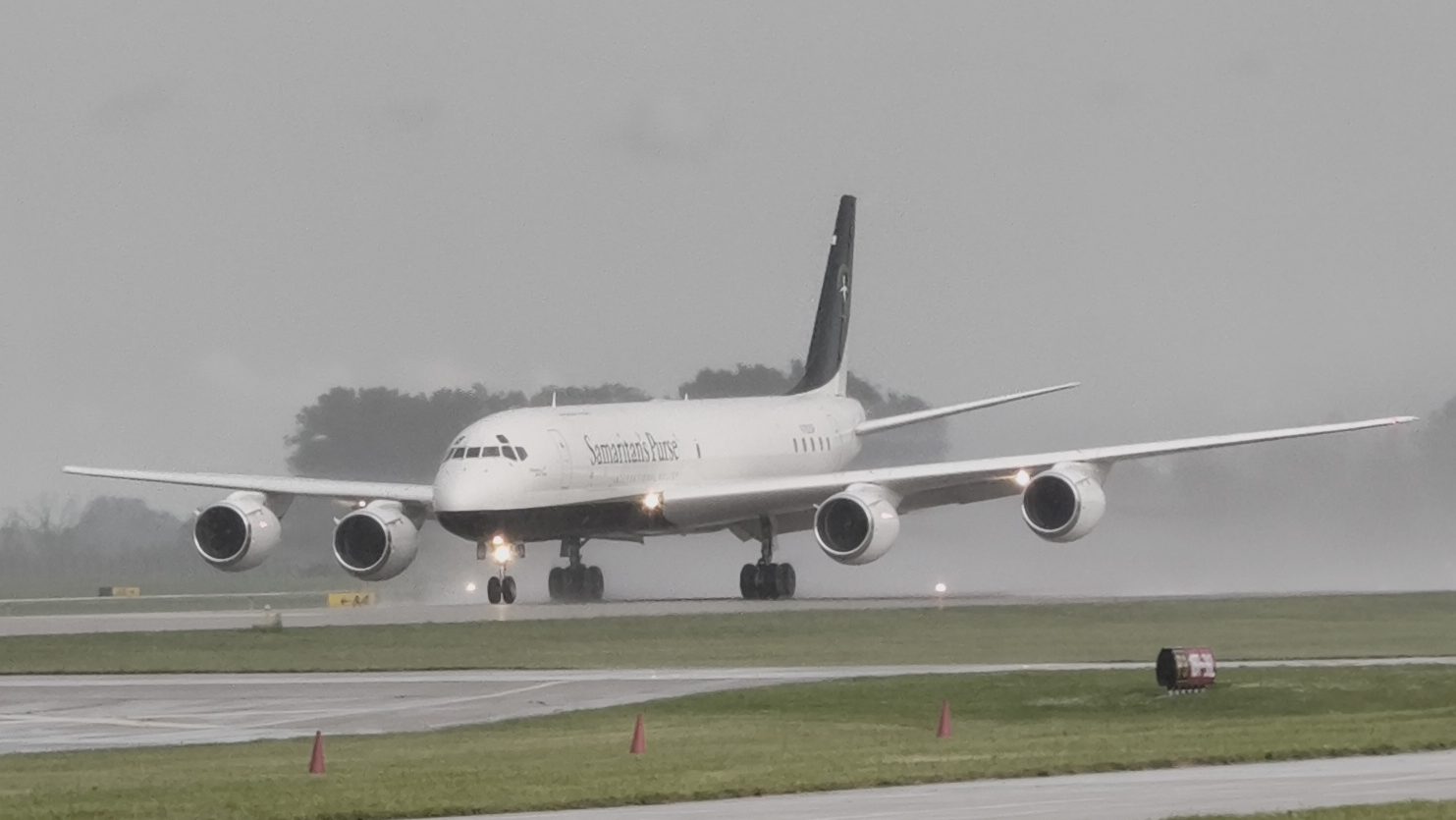
Douglas Bets On Jets
The Douglas Aircraft Company of Santa Monica, California, was once one of the largest players in civil aviation. Founded in 1921 by Donald Wills Douglas Sr., Douglas ruled the skies during the propeller-driven era. One of history’s most iconic aircraft, the DC-3, was a Douglas product. Over 16,000 examples were built beginning in the mid-1930s, and the DC-3 design has proven to be so everlasting that a shocking number of DC-3 variants is still flying today, long after most of the people who built them have passed.
Douglas followed the DC-3 up with durable workhorses including the DC-4, DC-6, and DC-7. None of these latter aircraft has the fame of the DC-3, but even some of those remain flying today, which serves as a testament to why Douglas ruled the prop era.
Douglas even successfully made the transition to turbine power in 1948 with the F3D Skyknight jet fighter. This was only the beginning. According to Airline Ratings, which quotes Richard G Hubler’s book Big Eight, the story of the DC-8 began in 1951. Then-American Airlines CEO Cyrus R. Smith was a friend of Donald Douglas Sr. and called up his buddy with a request. Smith wanted Douglas to introduce a newer version of its DC-6 piston-powered airliner that was capable of flying west across America without having to stop for fuel.
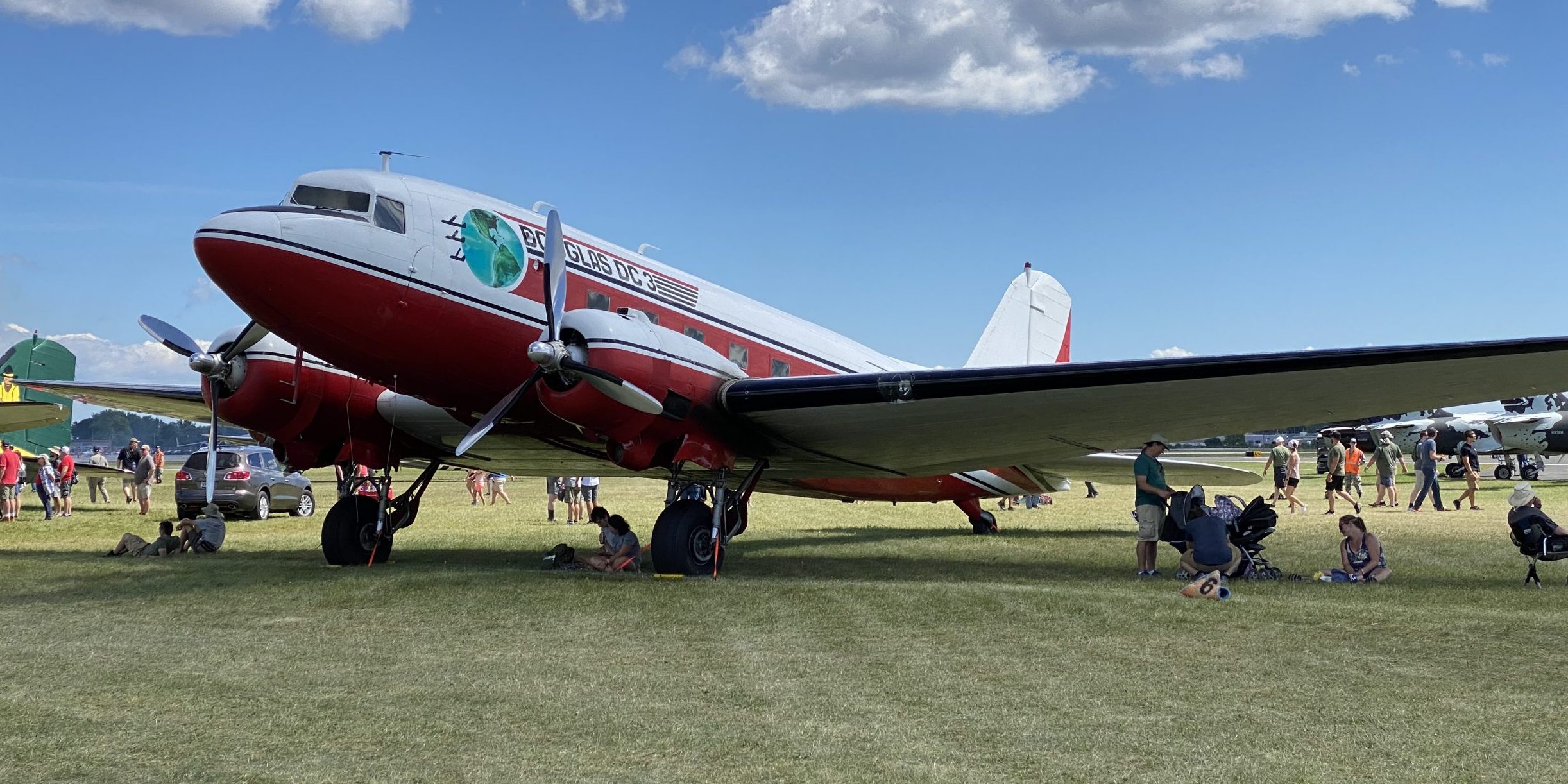
At the time, Airline Ratings notes, prop-driven airliner development was still alive. The Lockheed L-1049 Super Constellation, Lockheed’s answer to the Douglas DC-6, had taken its flight in July of that year and would go into service that December. Now, Douglas could have put its head down and cranked out another DC-6 variant, and indeed, the DC-6 would remain in production until 1958. However, Douglas engineers were enamored with the idea of using Pratt & Whitney JT3D turbofan engines to power a transport.
As Airline Ratings writes, Donald Douglas Sr. wasn’t exactly sold on the idea at first. Reportedly, in 1952, Donald Sr. told Douglas VP of Engineering Arthur Raymond that a jet airliner “would not have been a very good aircraft” due to the relatively low reliability and high fuel consumption of jet engines back then.
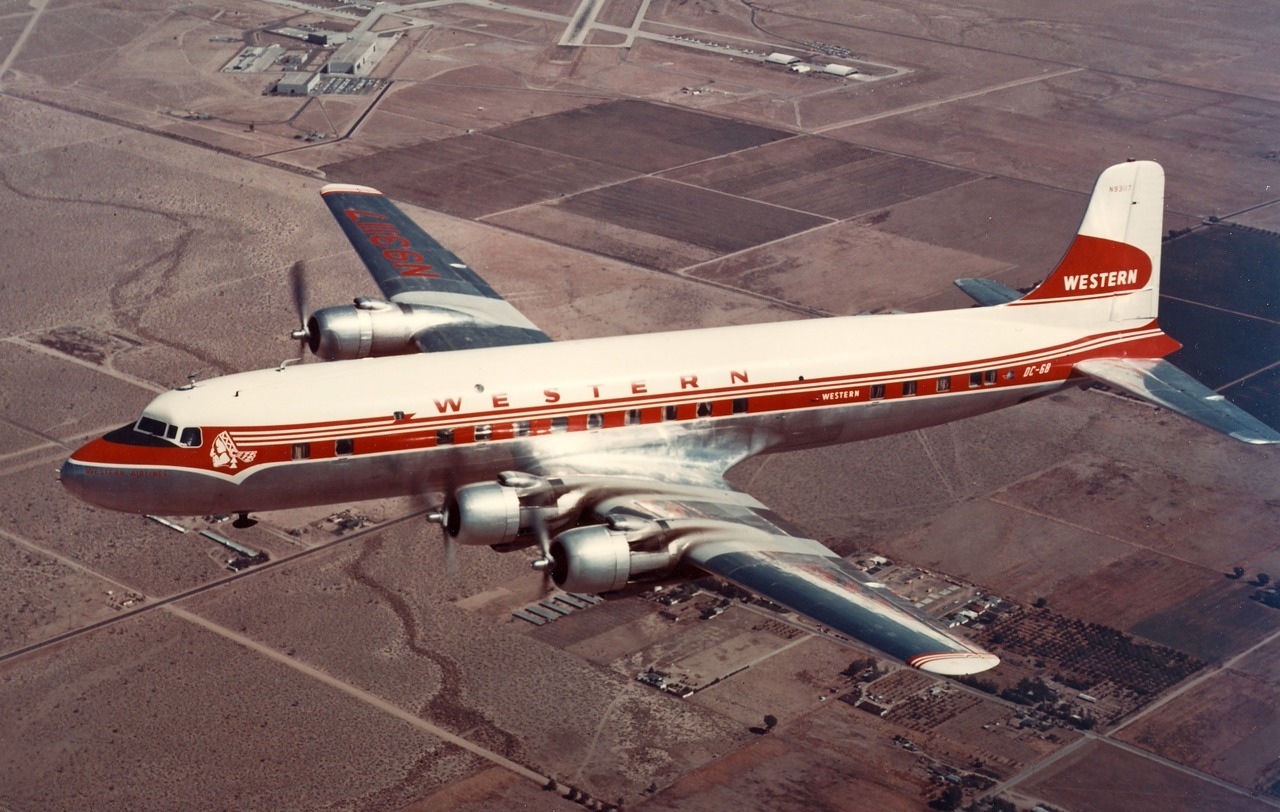
Further complicating matters, at least in Donald Sr.’s eyes, was the fact that airlines were already spending lots of money on aircraft like the DC-6, and might not want to buy a new type of aircraft so soon. Likewise, as Airline Ratings points out, Douglas advertised itself as flying twice as many people on its aircraft as all of its competitors combined. All of those aircraft were piston-engine airliners.
American Airlines was committed to the idea of a longer-range prop-driven airliner and ordered 25 aircraft. Douglas announced the DC-7 in 1951. But the march of technology would eventually force the airplane manufacturer’s hand.
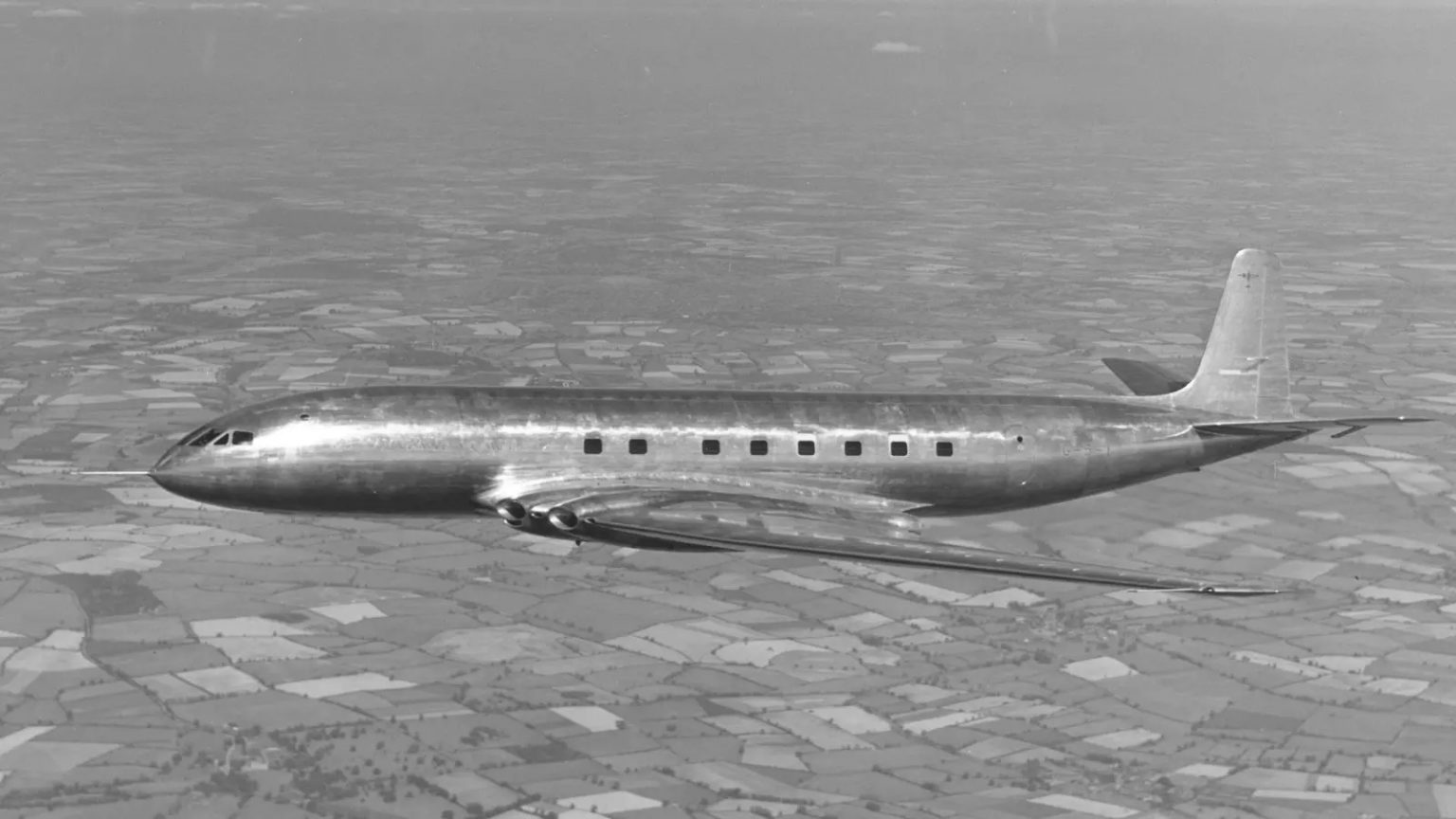
The early 1950s was a fascinating time in commercial aviation. In 1952, the British Overseas Airways Corporation began flying the world’s first commercial jet airliner, the de Havilland DH.106 Comet, on a route between London and Johannesburg. Meanwhile, here in America, Boeing spent its 1952 designing and then beginning construction of the Boeing 367-80, the aircraft that would serve as the basis of the Boeing 707. According to Airline Ratings, Boeing saw jet aviation as the future and figured that if it could jump on the trend early, it could finally sell more planes than Douglas.
Another notable event happened in 1952, and that’s when the United States Air Force put out a bid for a new transport to replace the Boeing KC-97 tanker. At the time, the tankers had only recently been entered into service, but these planes flew so slowly — about 200 mph slower than the era’s bombers — that they had to be stationed over the ocean at all times in case the military needed to scramble its bombers. A jet-powered tanker was promising because it could fly at the same speed as a jet bomber. The events of 1952 were enough to push Douglas to erect an office in California that was dedicated to pursuing jet-powered civil and military transports.
The DC-8 Program

The only problem was that, reportedly, Douglas was entering into a new territory that Boeing already had experience in. Boeing already knew how to build large jet aircraft thanks to its experience in the manufacture of B-47 and B-52 bombers. Likewise, the engines in the very early B-52, eight Pratt & Whitney J57s, were thought to be suitable for airline use. Boeing also had experience in building aerial tankers, too.
This didn’t stop Douglas from taking on the challenge, and Chief Project Engineer Ivor Shogrun made a valiant effort. Douglas went all-in on the project, chasing not only the government contract but an airliner. As Airways Magazine writes, Shogrun and the design team went through hundreds of different design configurations. One of those, Airways says, was a delta wing. Ultimately, Douglas landed on swept-wing design with four engines in pods fixed under the wings, a design similar to Boeing’s Dash-80.

By mid-1954, Airways notes, Douglas had dumped $3 million into the DC-8 project and the equivalent of 250,000 man hours. Unfortunately, Douglas just couldn’t catch up to the lead Boeing set. Boeing’s Dash-80 prototype was revealed that year, before Douglas had its own prototype. Despite this, Douglas wasn’t worried. Historically, the military purchased aircraft from more than one manufacturer, and Douglas was sure that would be the case here. However, in a cruel twist, in 1955, the Air Force went all-in on Boeing’s jet tanker design, leaving Douglas behind.
Douglas responded later in 1955 by refocusing the DC-8 program entirely on the commercial airliner market. Period reports surmised that Boeing would be too busy fulfilling the government contract, allowing Douglas to swoop in and be first to the market with an American jet-powered airliner. Of course, this isn’t how it happened. Boeing was working on both tankers and the Boeing 707 commercial airliner.

Douglas was ambitious with the DC-8, quoting estimated development costs of $450 million. The DC-8 was projected to have Pratt & Whitney JT3L engines good for 11,000 pounds of thrust and a range of 3,700 miles with 125 passengers onboard. National Airlines placed an order for six DC-8s soon after the announcement, Pan Am placed an order for 25 examples soon after that. A few weeks after Pan Am’s famous order, United Airlines placed an order for 30 of its own DC-8s.
Notably missing from this was Donald Douglas Sr.’s old friend, American Airlines. Reportedly, American Airlines went with the Boeing 707, in part because Boeing was ahead of Douglas and already had a plane flying, but the airline felt that the 707 was a more advanced aircraft that was projected to sell for a lower cost, anyway. Boeing even sweetened the deal by agreeing to make the 707’s fuselage as wide as the DC-8’s, which eliminated the Douglas aircraft’s size advantage.
Teething Issues

The DC-8 made its first flight on May 30, 1958, powered by the thrust of a quartet of 13,500-pound thrust Pratt & Whitney JT3C engines. The aircraft would then go into service a year later as the launch DC-8-11 with Delta Air Lines and United Airlines.
Early on, Airline Ratings notes, the DC-8 had several issues. One had to do with the DC-8’s wing sweep. The Boeing 707 swept its wings back 35 degrees while the DC-8 had a far more conservative 30-degree sweep. As Airline Ratings explains, aircraft wings can achieve low drag at high Mach numbers by keeping the air flowing over the wing at speeds slower than the speed of sound, thus avoiding shock waves and the drag associated with them. Because of this, a wing with 30 degrees of sweep could fly at around Mach 0.80 while 35 degrees could get you to Mach 0.85.
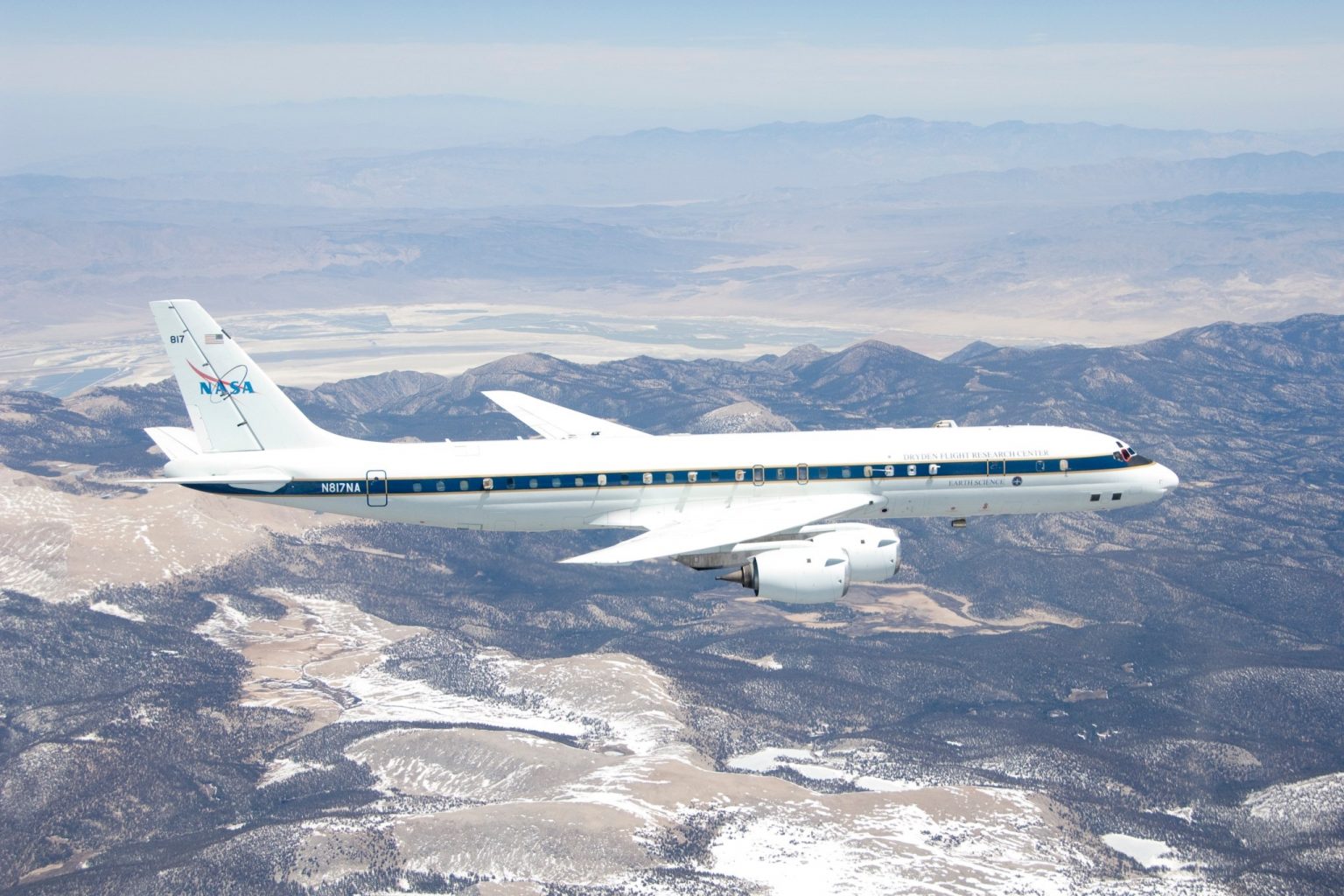
The Douglas DC-8 wing had a sweep back of 30 degrees, but Douglas promised speeds of Mach 0.85, anyway. The DC-8 employed an airfoil design that caused a shock wave at its leading edge, but configured the air after the shockwave in a way that was intended to eliminate the drag caused by the shock waves.
The problem was that, as Airline Ratings writes, Douglas never tested the wing in the real world. Calculations and wind tunnel testing suggested the wing would work, but it wasn’t flight tested until the first flight of the first DC-8. As it turned out, Douglas had goofed up, and its wing produced more drag than Douglas promised to the airlines. Eventually, Douglas found that given its wing and engine pod design, drag was 10 percent greater than it guaranteed to airlines and 13 percent greater than company estimates. Because of this, the initial DC-8s had an economical speed of Mach 0.798, lower than the guarantee of Mach 0.84 that Douglas had given airlines.

Douglas ran back to the drawing board to change the wings’ design, which included a new nose profile, wingtip extensions, wing slots, and more. Unfortunately, because Douglas didn’t figure out the screw up sooner, several early DC-8s were shipped with the older high-drag design. Douglas ended up having to offer a retrofit kit for the early examples. But then the hits kept coming as, reportedly, the changes to the wing didn’t completely fix the drag problem. Douglas ended up offering to pay airlines $230,000 per aircraft for the goof.
Now, you might be wondering something. If a higher wing sweep was known to deliver higher speeds, why did Douglass attempt to make a more conservative wing sweep travel faster? Reportedly, Douglas did this because it wanted the DC-8 to fly as much like the DC-7 as possible. The idea was that DC-7 pilots could have an easier time transitioning to jet power, and training would be cheaper, too. It was also thought that this was a safer way of transitioning to jets, as the stall speeds of the DC-8 wouldn’t be much different than the DC-7.

Reportedly, this wasn’t the only blunder in the DC-8 program, as Douglas spent $10 million developing its own seats for the DC-8, which ended up being no better than the off-the-shelf seats that were already on the market.
Sales also weren’t exactly where Douglas wanted them to be in the early days of DC-8 production, so it tried to please as many airlines as possible. Douglas introduced many models of the DC-8 and then changes within models. Airline Ratings notes that the original Pratt & Whitney JT3C engines were swapped for more powerful 16,800-pound thrust JT4A engines. Come 1961, the JT3D engine came around, bringing better fuel economy and 17,000 pounds of thrust or 18,000 pounds of thrust, depending on configuration.
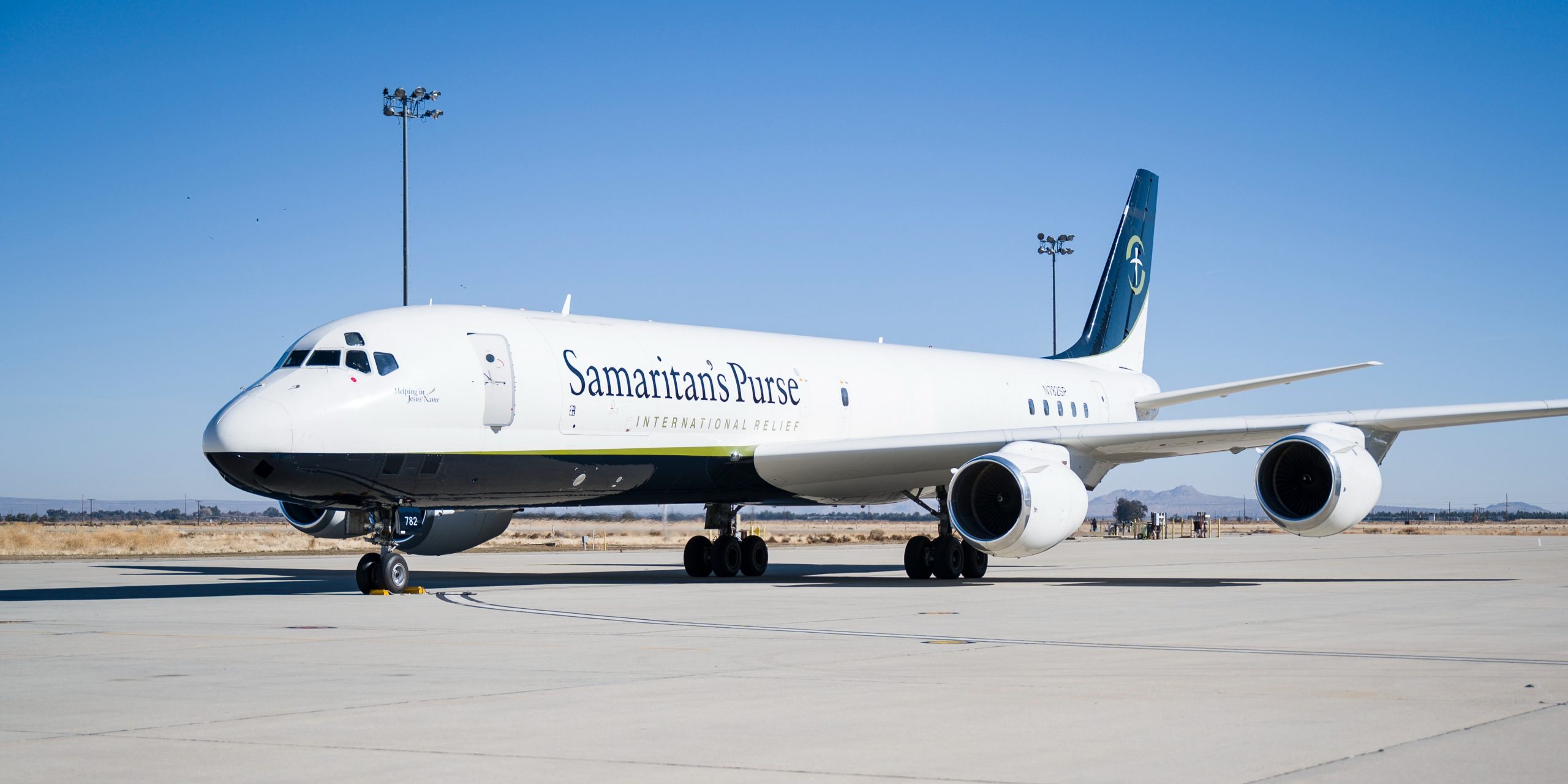
To illustrate how crazy this got, the original DC-8 is known as the Series 10, and each subsequent model counted in 10s, up to the Super 70 Series. Each series often had additional sub-models. The most common DC-8 was the Series 50, which sold 142 copies. These beauties were 150.7 feet long, carried up to 189 passengers, had a maximum takeoff weight of 325,000 pounds, could carry 23,393 gallons of jet fuel, and could fly as far as 5,855 nautical miles. The Super 60 Series stretched out to 187.4 feet long and could carry up to 259 passengers in a high-density configuration.
A total of 556 examples were built between 1958 and 1972. The DC-8 failed to live up to its mission of beating Boeing, which sold 865 of its 707 over a longer period. To be fair to Douglas, it did put forth a great effort to sell its planes. Orders for DC-8s and the later DC-9 soared in the mid-1960s, but a perfect storm of labor shortages, parts shortages due to the Vietnam War, and the incredible backlog meant that Douglas just couldn’t keep up. Airline Ratings notes that the strain of building DC-8s and DC-9s was one of the reasons why Douglas merged with the McDonnell Aircraft Company in 1967.

Despite all of this, the Douglas DC-8 still became an aviation legend. Sure, it was overshadowed by the Boeing 707, but this was one of the aircraft responsible for the Jet Age. The DC-8 also found a way to get into the history books. In 1961, Douglas test pilot William Magruder flew a DC-8 to around 50,000 feet and then put the aircraft into a dive. At around 45,000 feet, it broke the sound barrier, maintaining Mach 1.01 for about 16 seconds.
What’s perhaps even more impressive than the speed was how Magruder recovered. He found that the control surfaces were ineffective due to the loads of flying past Mach 1.0 and beyond the limits of the aircraft. Pulling up didn’t work, so instead, he pushed the control column forward even more, which unloaded the control surfaces enough for Magruder to enact a recovery. So, if you’re ever in a super steep dive and pulling up isn’t working, push forward a little more first.
Samaritan’s Purse
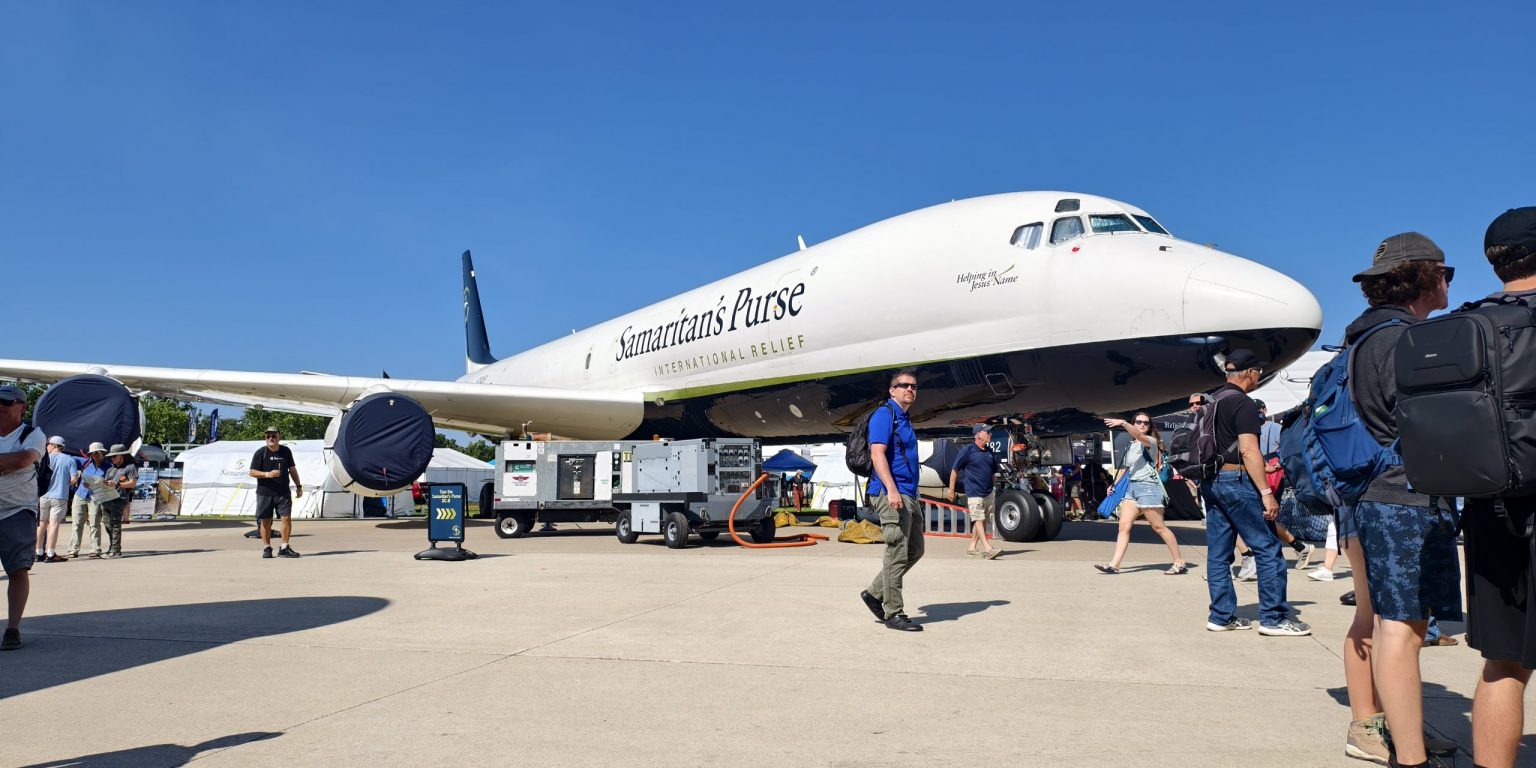
This brings us to the flagship of Samaritan’s Purse, Douglas DC-8-72CF, registration N782SP. This aircraft was delivered new to Finnair in 1969 as what’s known as a “combi.” A combi aircraft is one that is designed to carry both passengers and cargo. These aircraft are relatively rare today, but back then, flying a combi meant an airline had two bites of the apple to make a profit. Finnair’s configuration called for the aircraft to carry 130 passengers and dedicate the rest of the space to cargo.
The Samaritan’s Purse DC-8 was traded to the French Air Force in 1981, and then to Air Transport International in 2005. According to the records I’ve been able to find, the aircraft started life with Pratt & Whitney power, but was converted to CFM International CFM56 engines (good for 22,000 pounds of thrust) around the time it was transferred to the French Air Force. Further changes were made to the aircraft when it was transferred to Air Transport International, namely, the reduction of passenger capacity to just 32 people.
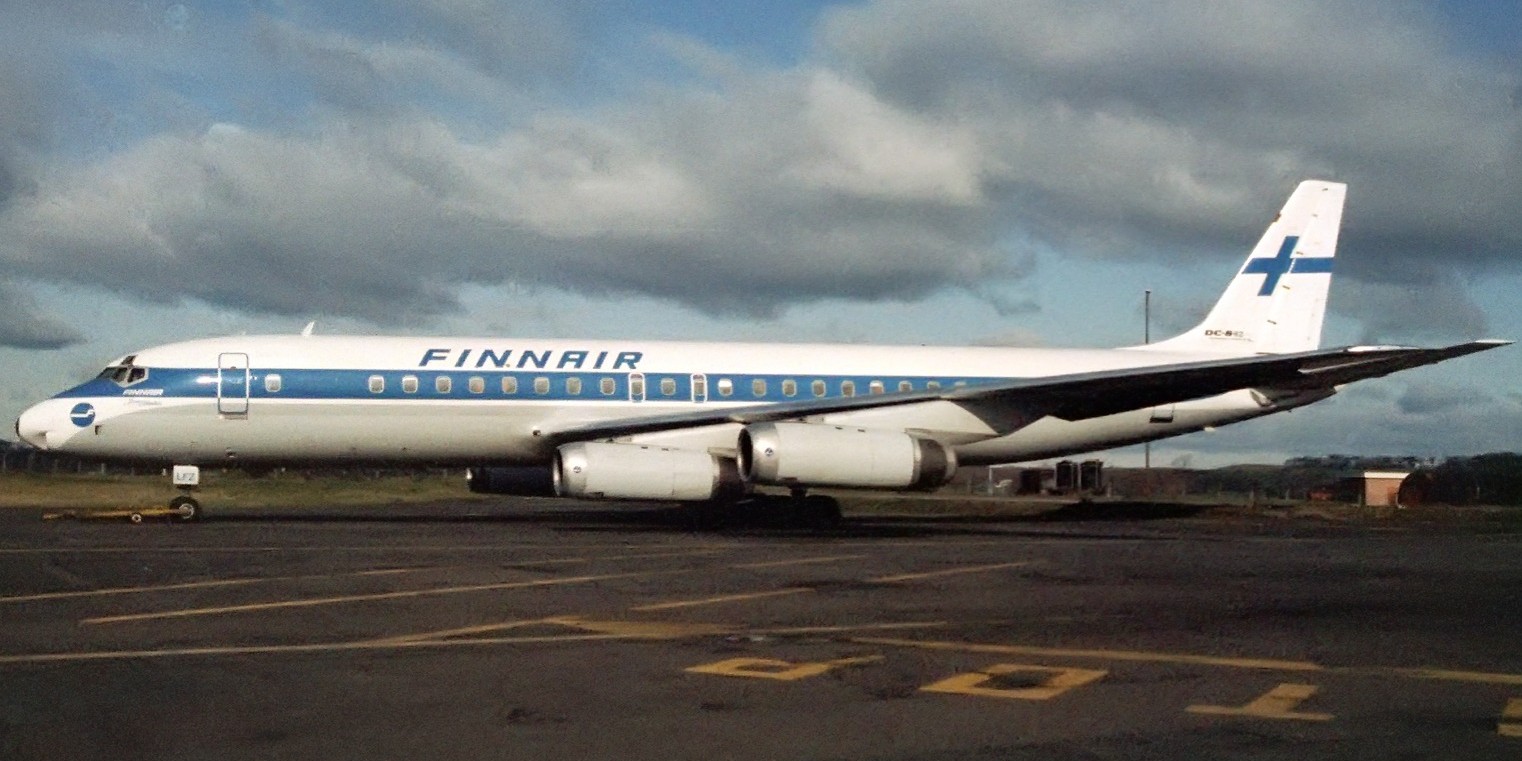
The result is that N782SP has a fuselage where two-thirds of its length is for cargo, while the final one-third is an intact vintage airliner passenger cabin. Another weird oddity about N782SP is the spacing of its windows. Douglas was concerned about the metal fatigue that befell the early de Havilland Comets, and engineers at Douglas felt that the DC-8 could be made to last longer by spacing the windows in every other fuselage frame, or twice as far apart as you’d find on an aircraft like a Boeing 707. In case you were wondering, Aero Toolbox defines these frames as:
Frames are transverse elements that define the cross-section of the fuselage. They are typically spaced approximately 20 inches apart and define the aerodynamic shape. The frames and stringers are spaced in such a way to ensure that the resulting bays that are created support the skins against buckling.
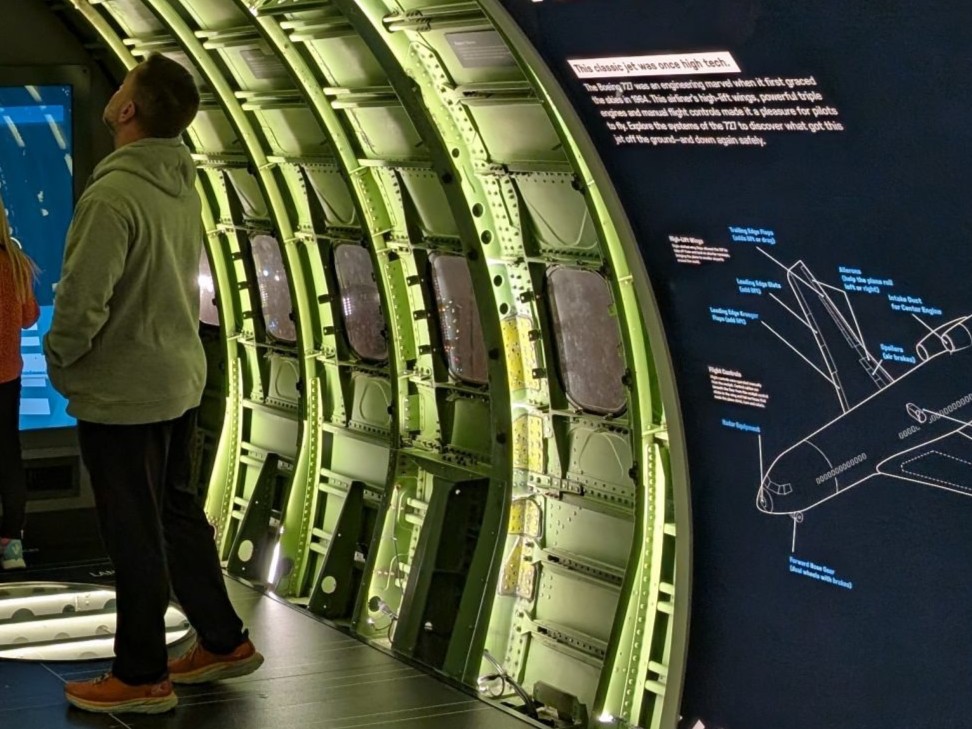
Basically, in a typical aircraft, you have about a 20-inch space with stringers on both sides, a window, and skin. Each of these spaces is a “frame.” The DC-8 had a window only in every other frame, as the belief was that the plane would last longer thanks to reduced stress. To the credit of Douglas, the DC-8 has proven to last quite a long time! Unfortunately, this did mean that, as airlines reduced the space between seats, a lot of DC-8 passengers did not get windows, even when seated in window seats.
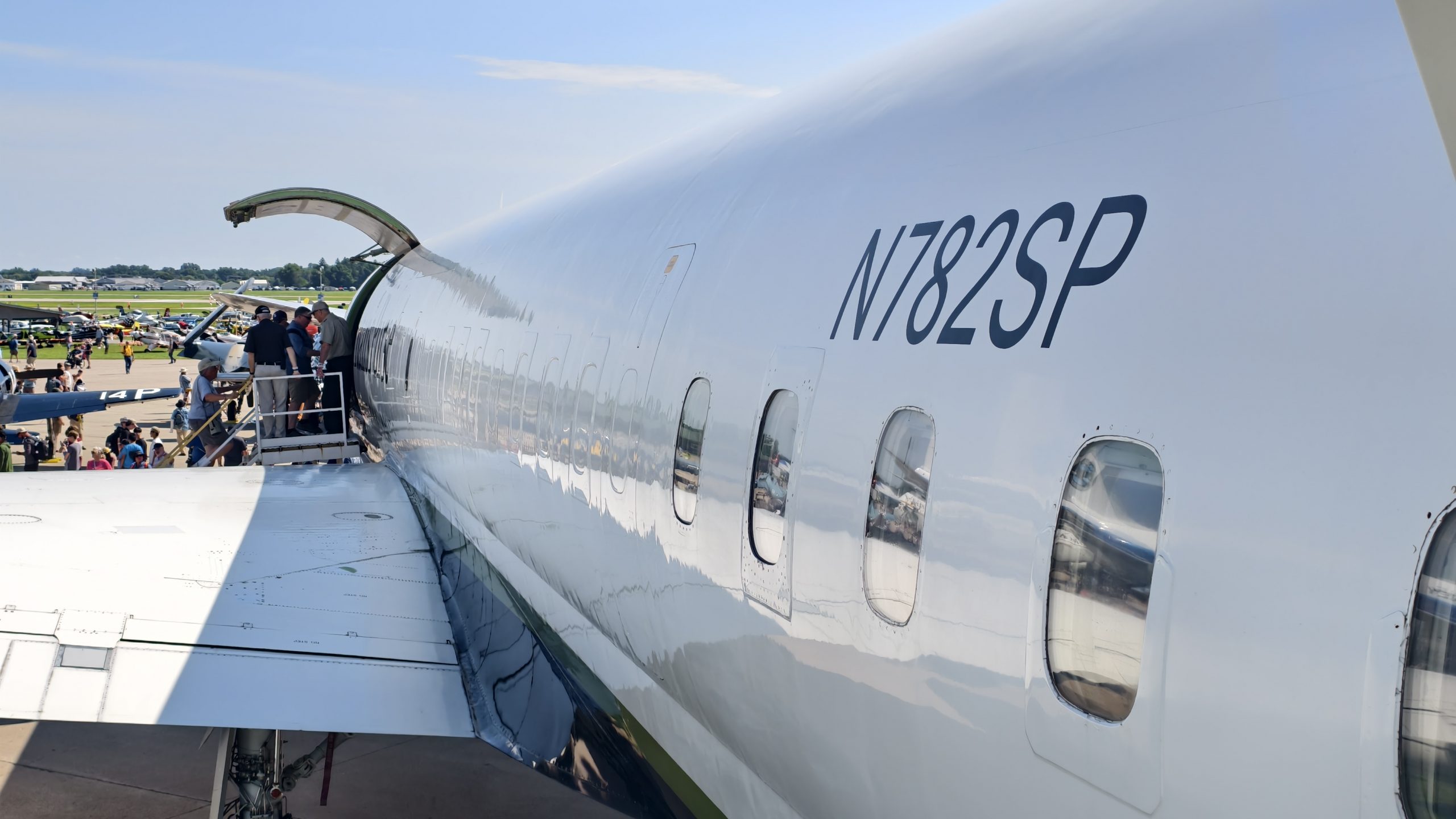
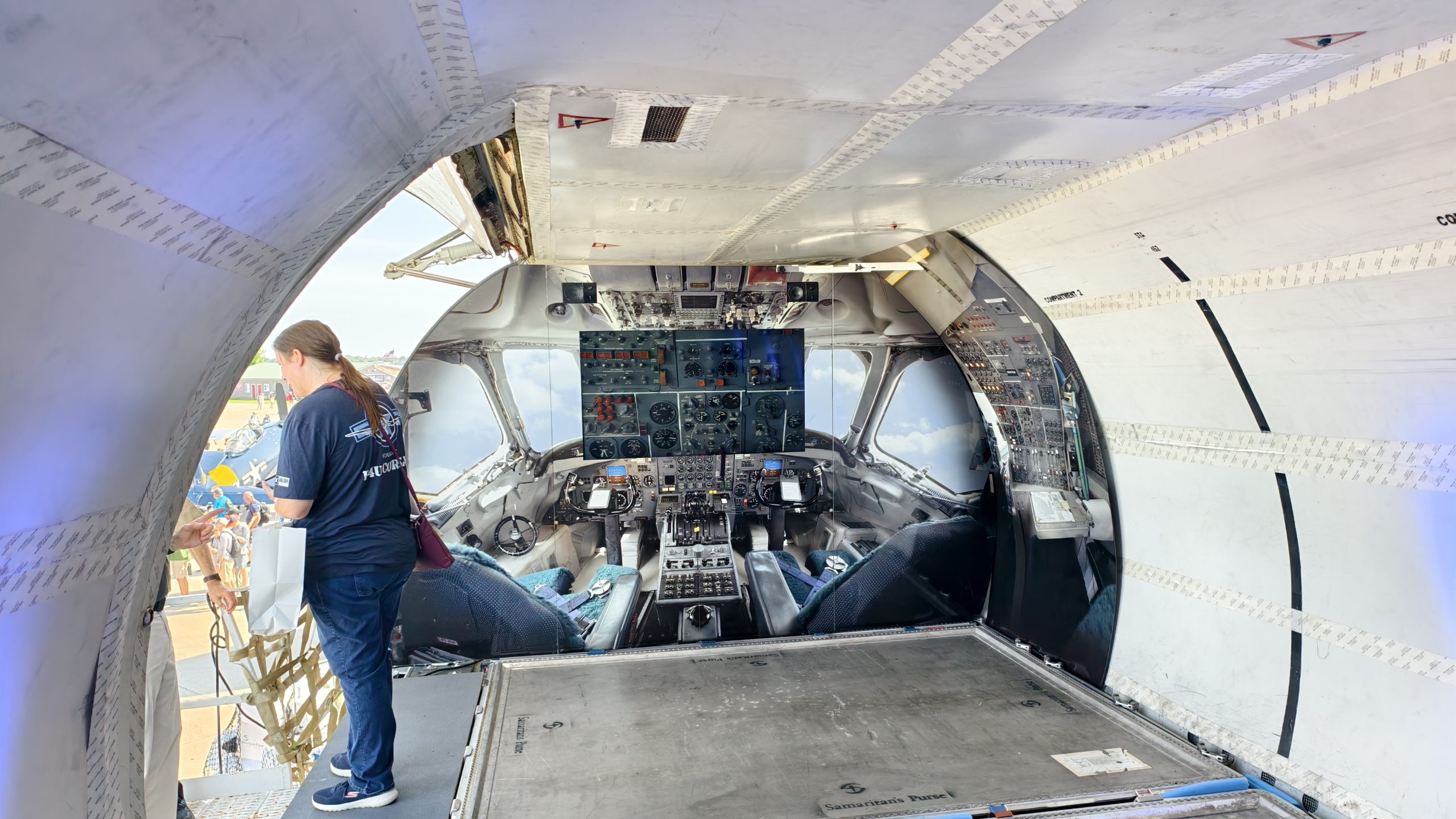
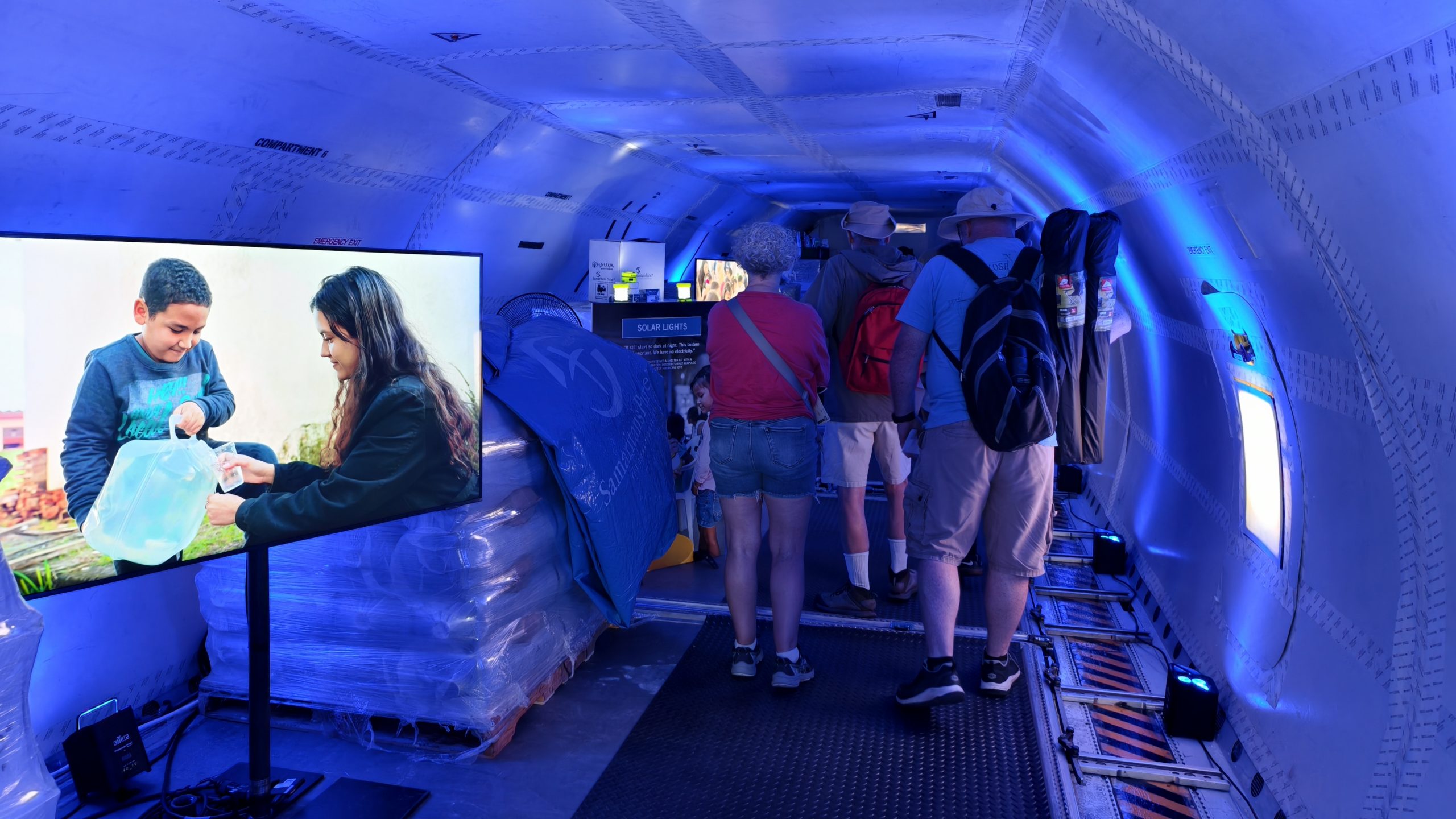
This bird is old in every sense, from those goofy windows and being a quad-engine narrowbody airliner. But the flight deck isn’t particularly modern, either, and still requires a second officer, also known as a flight engineer.
N782SP is being flown by Samaritan’s Purse, an evangelical Christian humanitarian aid organization. The ministry’s motto is “Helping in Jesus’ Name,” and the organization gives this for its backstory:
“Let my heart be broken with the things that break the heart of God.” Bob Pierce wrote these now-famous words in his Bible after visiting suffering children on the Korean island of Koje-do. This impassioned prayer is what guided him as he founded and led the ministry of Samaritan’s Purse in 1970. His mission for this organization was “to meet emergency needs in crisis areas through existing evangelical mission agencies and national churches.”
After World War II, Bob Pierce traveled throughout Asia as an evangelist and journalist with Youth For Christ. While on a university lecturing circuit in China, he stumbled across some courageous women who were living among lepers and orphans, sacrificing everything to share the love of Jesus Christ. Through their selfless love, God gave Pierce a vision for ministry. He dedicated himself to finding and supporting other such Christians who were caring for the poor and suffering in the distant corners of the world.
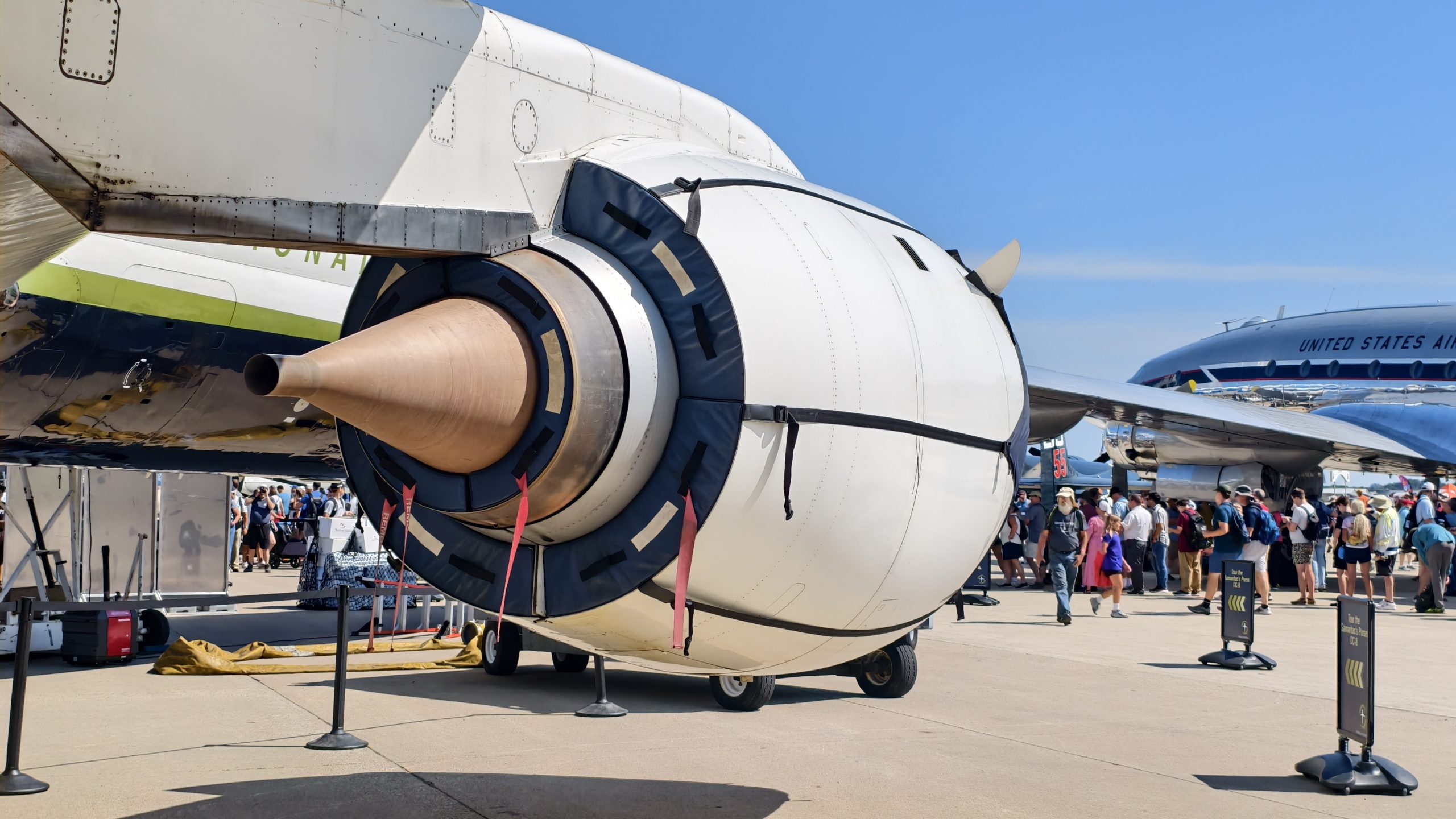
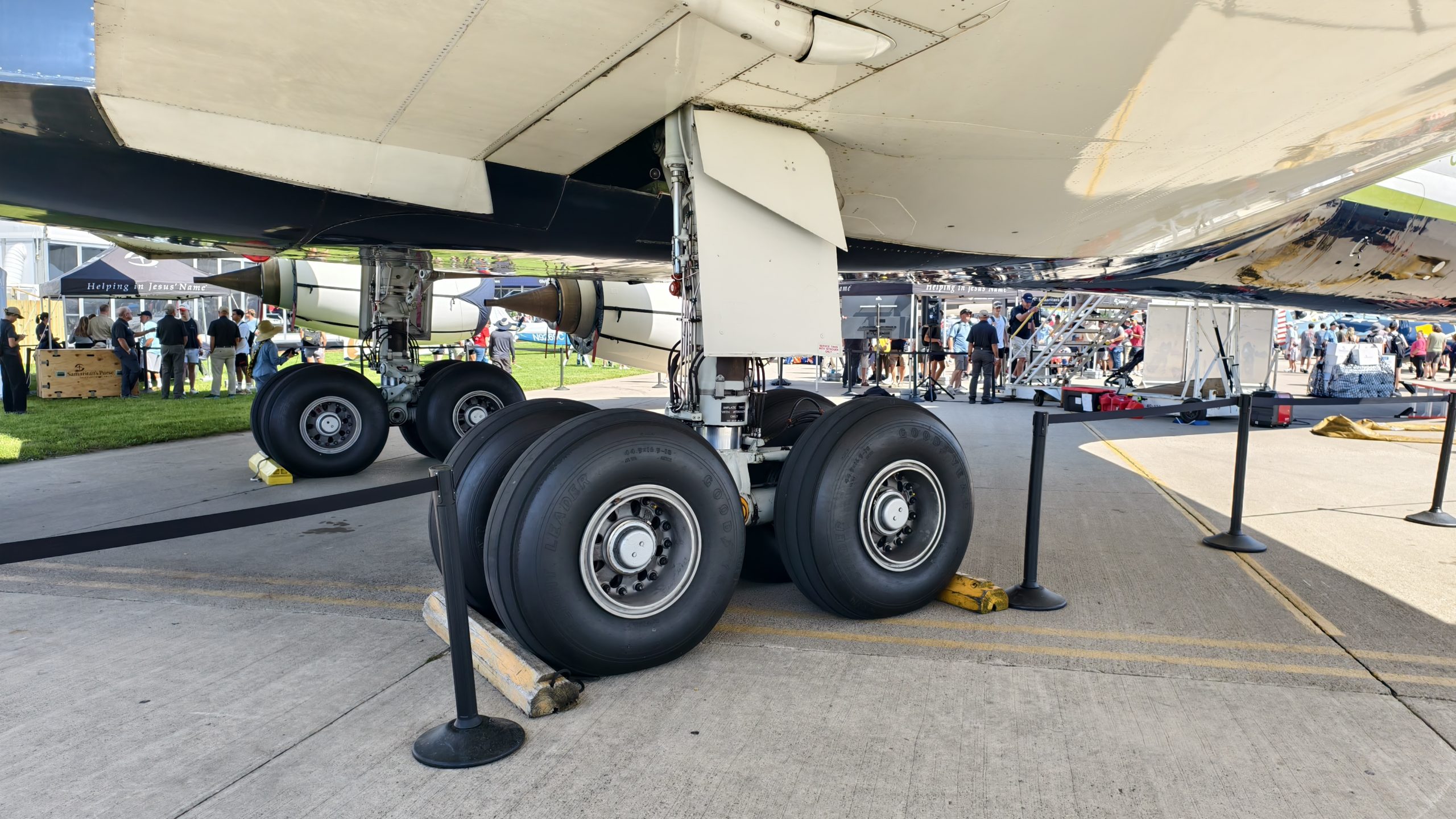
Franklin Graham, who had known Pierce since 1973, became President and Chairman of the Board of Samaritan’s Purse in 1978, after Pierce died of leukemia.
Critical to Samaritan’s Purse is its fleet of 24 aircraft. The flagship of this fleet is the DC-8, but it also contains helicopters, a Boeing 757, and even a Douglas DC-3. Samaritan’s Purse says it acquired the DC-8 in 2015, and it’s been flying missions since 2016. The ministry says that the DC-8 has flown over 200 missions and delivered over 8.7 million pounds of cargo. The aircraft can carry up to 72,000 pounds of cargo on each trip, and the ministry often brings along aid workers, doctors, nurses, and other workers to areas destroyed by war or natural disasters.
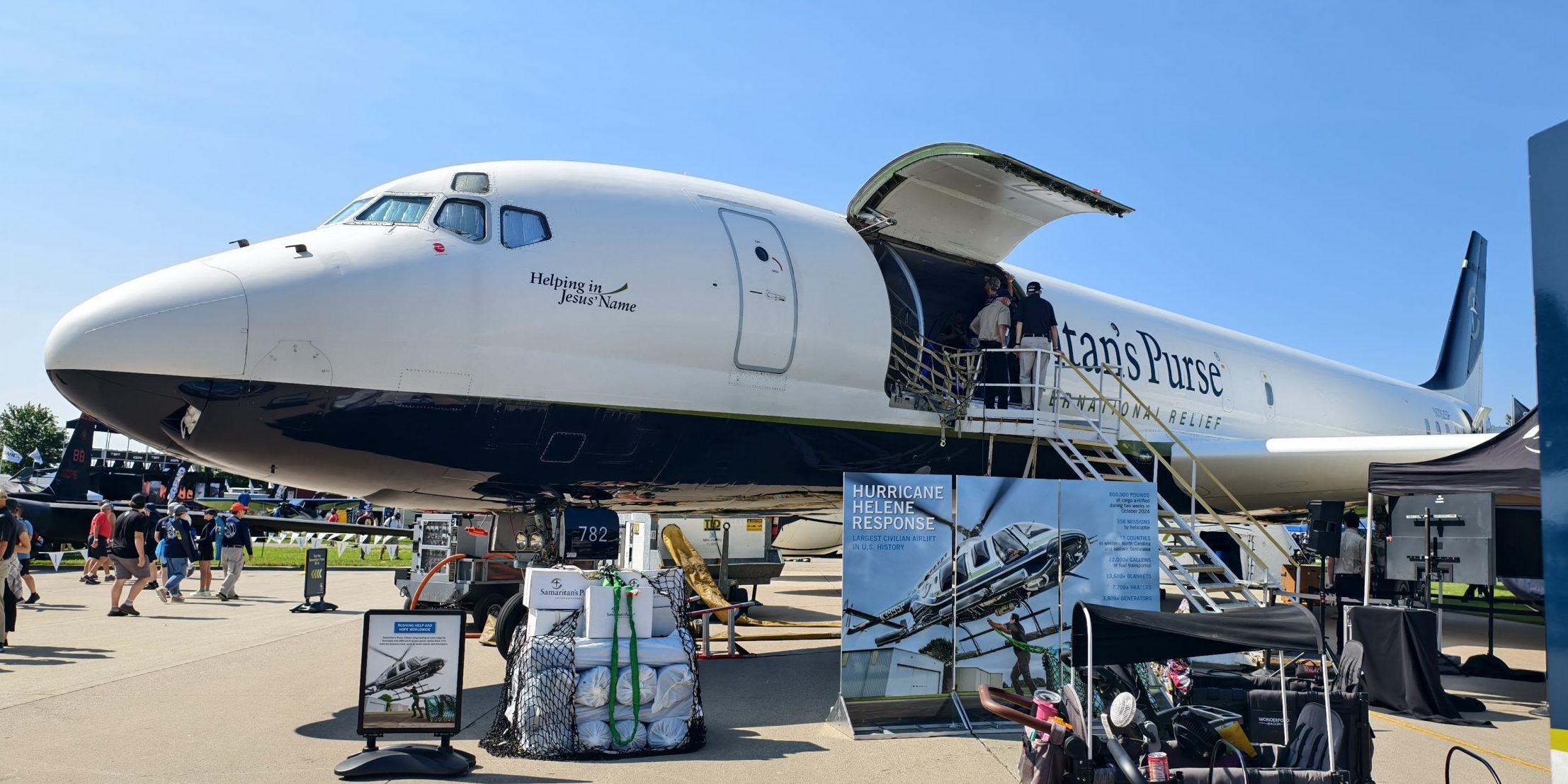
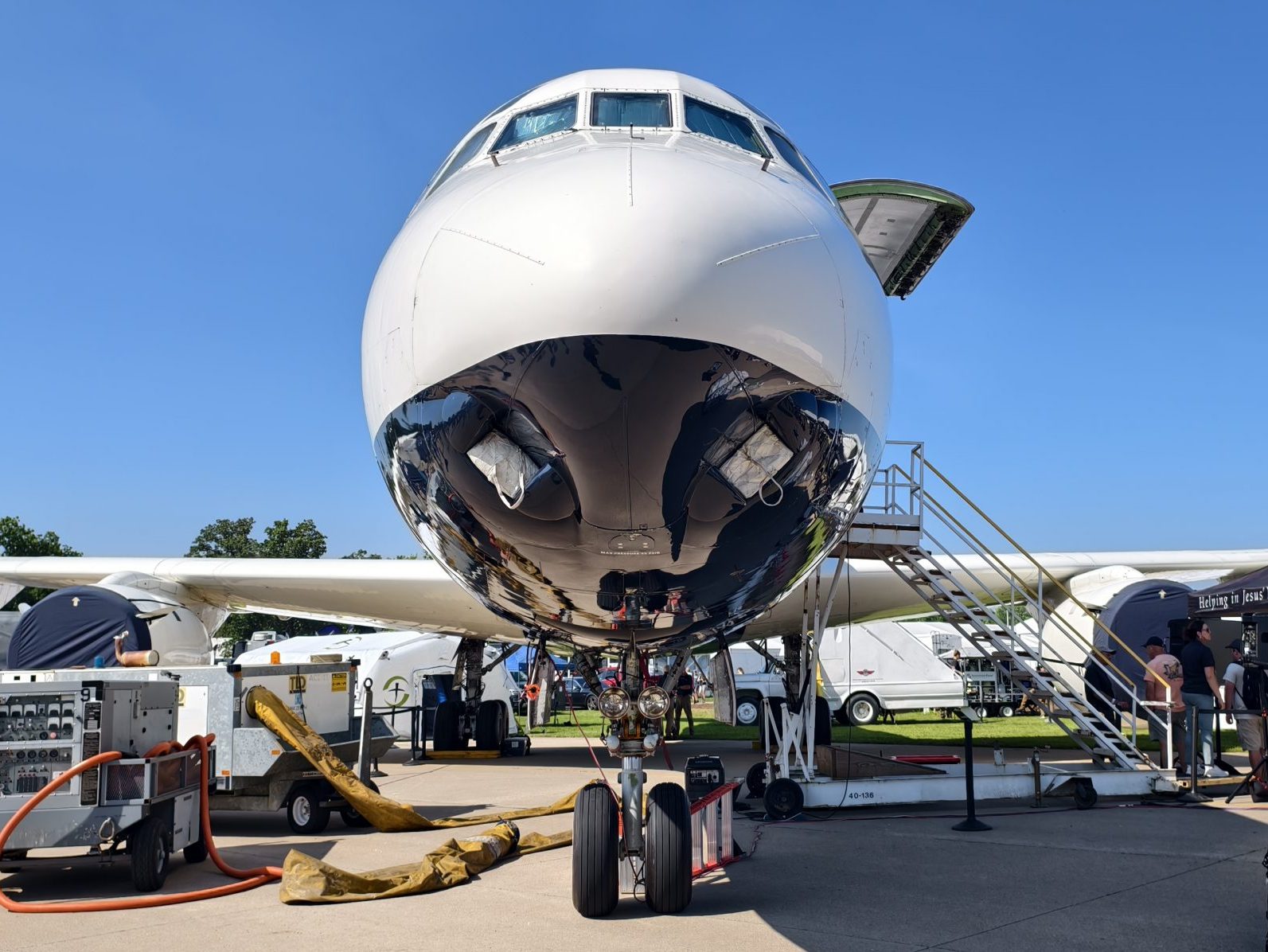
Samaritan’s Purse says it can often have its aircraft off of the ground within 24 hours of a catastrophe, and the organization has been everywhere from the aftermath of Hurricane Helene in the United States to earthquakes and floods all over the world. The DC-8 was also a part of the 2020 COVID-19 response in Italy. The aircraft is almost always working. It left AirVenture 2025 on Thursday, July 24, after taxing in a downpour. Apparently, that weekend, the DC-8 and the ministry’s 757 had delivered 130,000 pounds of food to the citizens of Gaza.
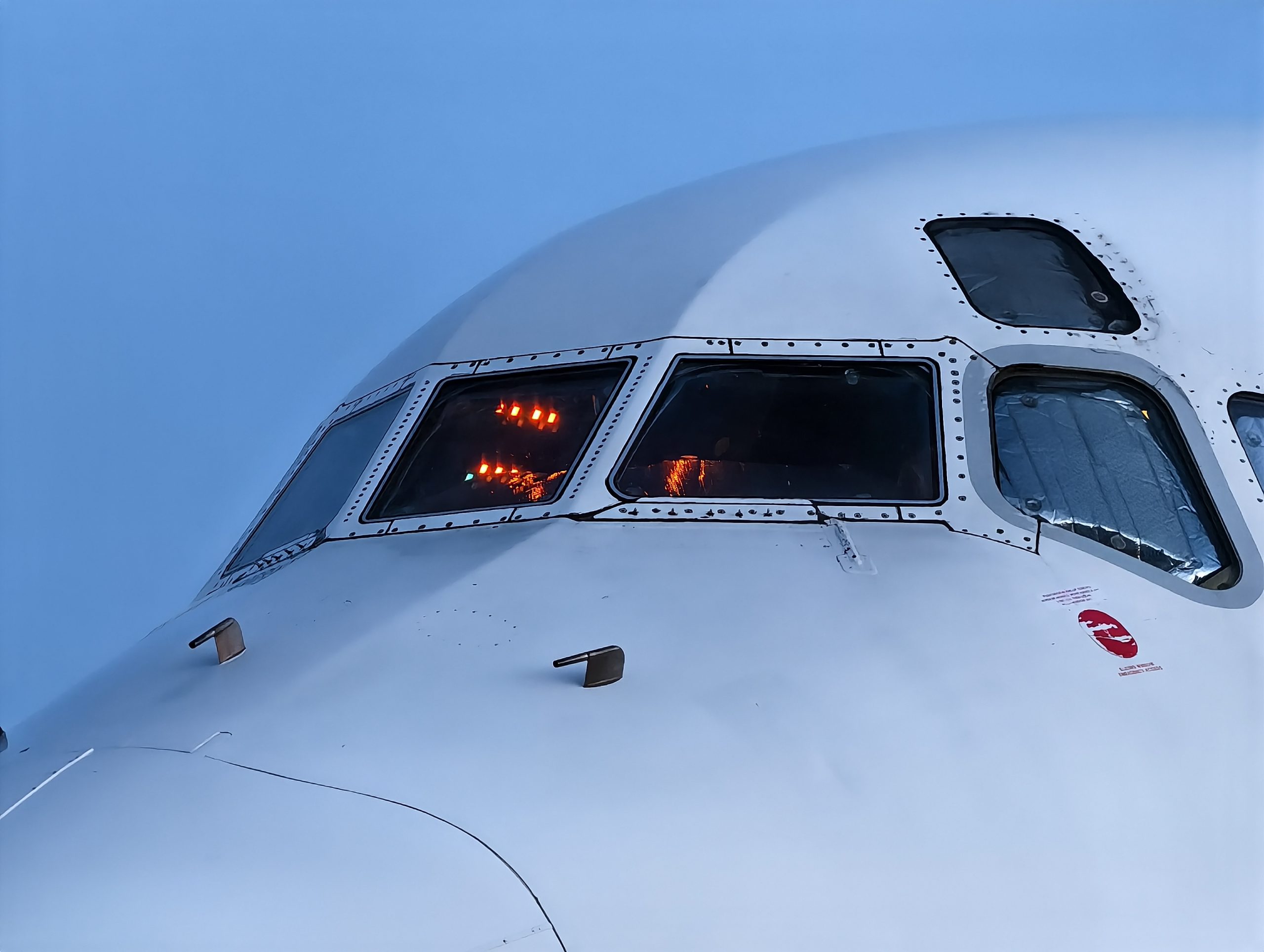
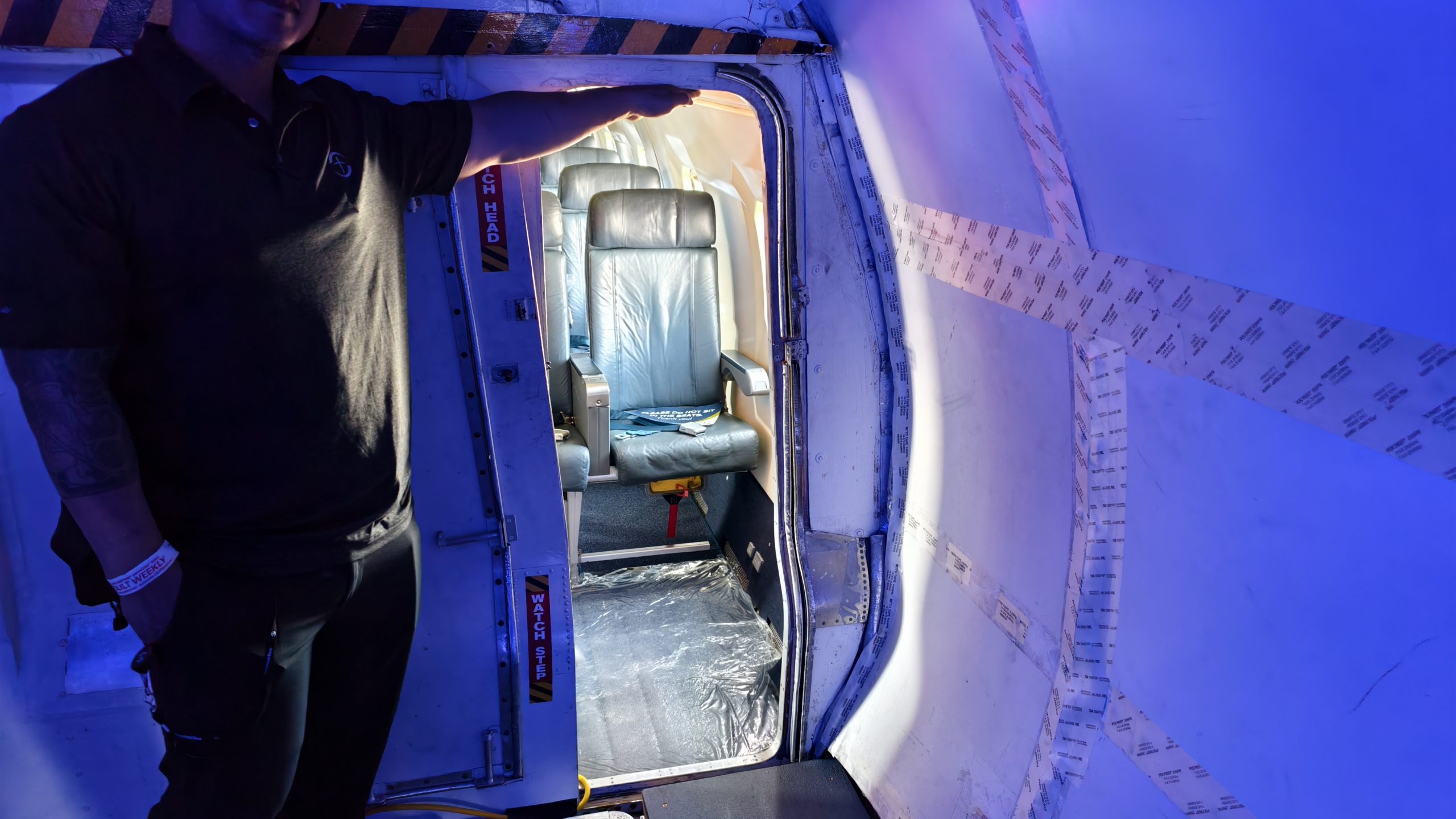
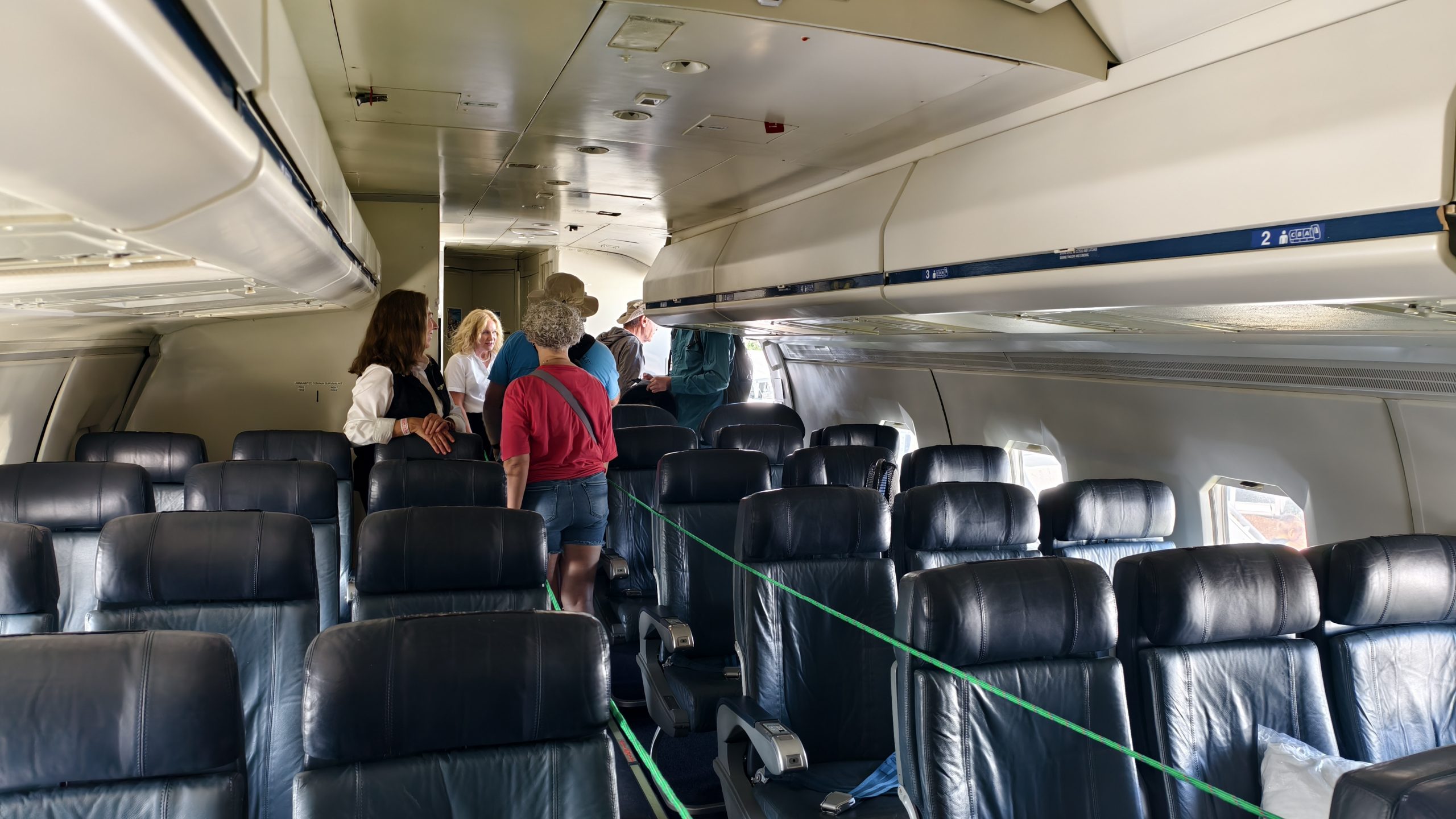
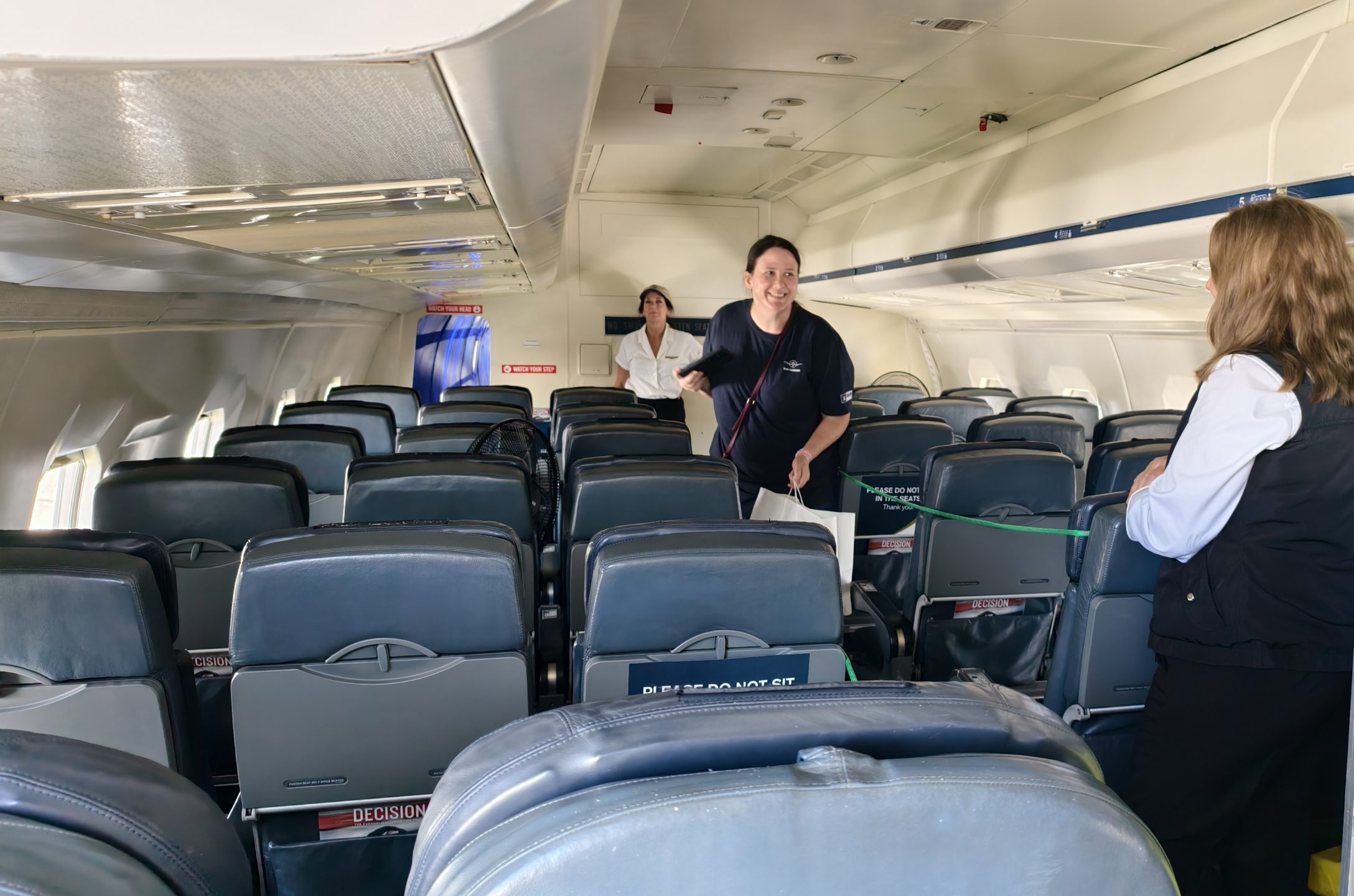
Samaritan’s Controversy
Samaritan’s Purse does a lot of good. However, I am a person who believes in full transparency, no matter the subject, and Samaritan’s Purse has often been mired in controversy.
Samaritan’s Purse has come under fire for the “Statement of Faith” that employees and even volunteers are required to sign. The ministry bases its beliefs on twelve points, with one of them being that marriage is exclusively between a genetic male and a genetic female. Understandably, some people aren’t exactly happy with the requirement that employees apparently have to be straight and disavow gay people to help starving people. Technically, this would mean someone like me would have no chance with Samaritan’s Purse.
In addition, in 2001, the New York Times reported a bit of controversy about Samaritan’s Purse’s earthquake aid; from the NYT:
An American evangelical relief group that is using private donations and United States government money to help victims of two earthquakes has blurred the line between church and state as its volunteers preach, pray and seek converts among people desperate for help.
Residents of several villages said volunteers from Samaritan’s Purse, which has received more than $200,000 from the United States Agency for International Development and is to receive a second similar amount, has held half-hour prayer meetings before showing them how to build temporary homes of metal and plastic provided by the American government.
Samaritan’s Purse came under fire again only two years later when, as the Guardian reported, ministry president Franklin Graham allegedly said something highly controversial about the religion of Islam.
To be clear, I’m not here to litigate Samaritan’s Purse’s past or present here, but I am telling a historical piece here, and this is a part of the ministry’s history. For what it’s worth, the organization says that it does not discriminate when it dispenses aid. Take what you read as you will, and you can learn more with your own research.
Time Is Ticking

Let’s get back to the aircraft here. Part of the reason why this DC-8 has been around for so long is that Douglas built such a robust aircraft. But it’s also been taken care of. Samaritan’s Purse says it’s been through every square inch of the aircraft to inspect it, replace worn parts, and refurbish other parts. The aircraft has been working hard ever since the Federal Aviation Administration cleared it for operations. One of the reasons why Samaritan’s Purse loves this aircraft so much is its 7,000-nautical-mile range, which permits Samaritan’s Purse to depart from its base in North Carolina and fly as far as Japan if it needs to.
Unfortunately, every aircraft will eventually reach the end of its service life, and N782SP is getting tired. The airframe is nearing 100,000 hours, and Samaritan’s Purse is getting ready to retire the aircraft this year. Samaritan’s Purse has already acquired the Boeing 767 that will replace the DC-8, so time is ticking. Don’t worry, I won’t let you leave without a sweet departure video:
Once this DC-8 is retired, there will be only a few more operational examples left in the world. All of those aircraft are purely freighters, and it’s only a matter of time until they are also grounded. That makes Samaritan’s Purse’s Douglas DC-8 an extraordinarily rare aircraft. It’s the last flying DC-8 with a real passenger cabin, and represents one of the last operational examples of the first generation of American jet airliners.
This DC-8 has outlasted several younger aircraft and is flying proof that Douglas built some seriously tough aircraft. Aircraft like the DC-8 changed the world, and soon, there won’t be any of them flying anymore. Sure, it never reached the fame of the Boeing 707, but the DC-8 is still a rockstar, nonetheless.
Top graphic image: Air Force Materiel Command

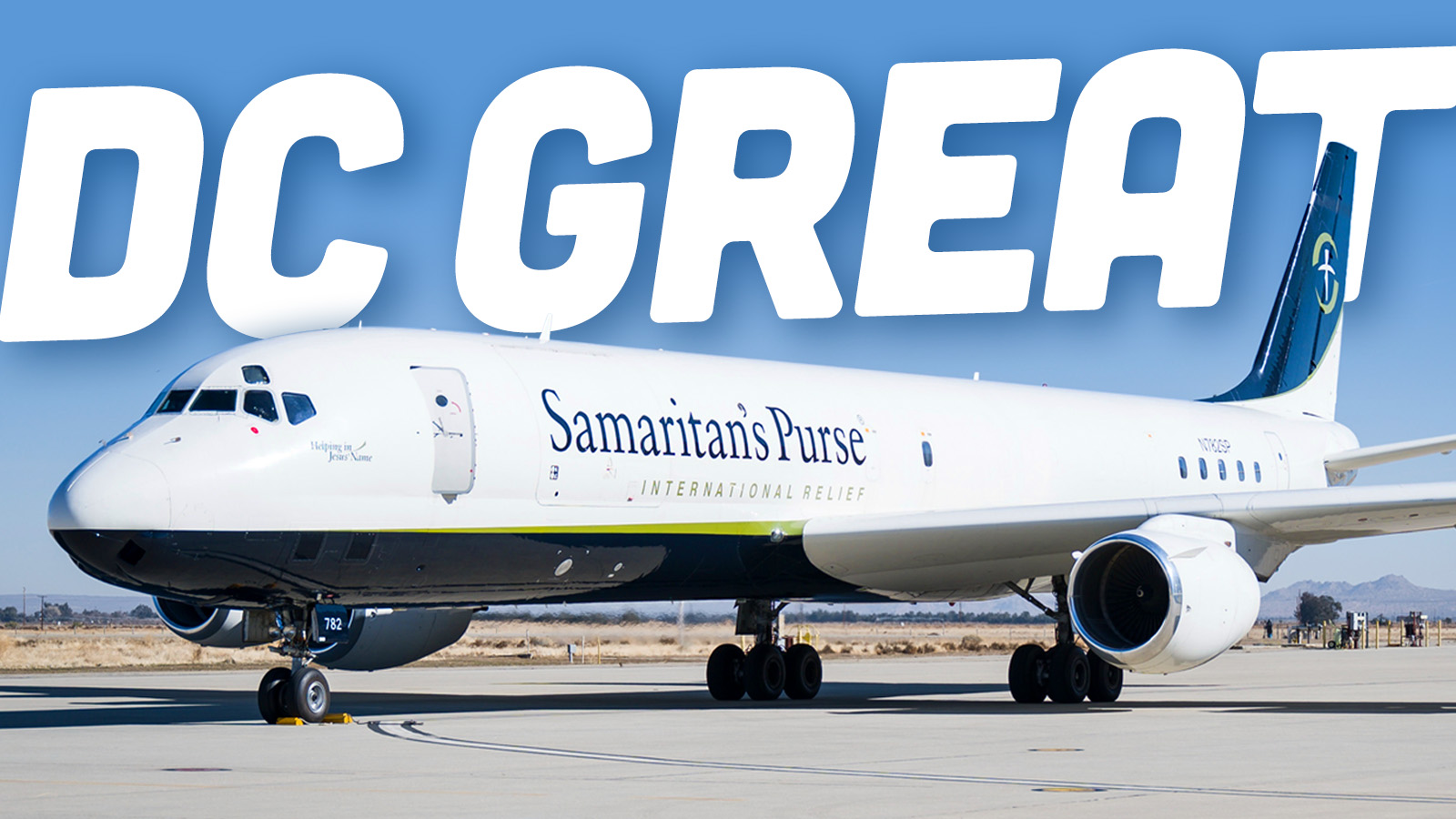







That Boeing 707 (N70700) livery is great!
I’m curious how their 767 replacement will compare to the Combi in terms of cargo capacity, range and fuel burn. Not needing a Flight Engineer is obviously a saving. Twinjets are inherently more efficient than plane with four.
I had to chance to fly a KLM 747 Combi twice (2 round-trips, so 4 times), with passengers in the front. Once bumped to business, but it was only Guatemala-Mexico… The other one was Guatemala-Amsterdam. Super comfy flight on the Queen of the Skies.
Maybe they’ll donate the jet to the local community college aviation school which is right next door to their hanger. At least in this area of North Carolina, the Baptists control of the social life of the citizens has diminished. Scaled back Blue Laws. Used to be nothing was open on Sunday’s except gas stations and movie theaters. Gotta have that forced day of rest on Sunday’s.
Just saying I caught Dc-8 with tail number OB-2231P on Skycards flying and landing in the US today. I know, it’s Peruvian registered but it was in the US lol
Oh crap, there goes my evening. Samaritan’s Purse wasn’t showing in Skycards when it departed from Oshkosh, so I don’t actually have it in the game yet. Time to go chase OB-2231P!
Was on a haiti to Miami flight, has to leave miami sometime! There are apparently 4 flying DC8-70s (which I understand to include all the -71, -72, -73 re-engined variants) with US map hotspots in Miami and around Idaho Falls for some reason
Skycards has been my low key addiction since Alanis posted it a few weeks back.
A few years ago I got to tour the Flying Eye Hospital, which is a DC-10 converted into – wait for it – a flying eye surgery hospital. Their mission is not unlike Samaritans Purse, minus the religious crap. They fly into underserved areas like in Africa and East Asia, where simple procedures like cataract removal are unavailable and blindness is a blocker to thriving. Really amazing to see all that impact embodied in one airplane.
I never had the chance to fly on a DC-8, though I routinely flew on DC-9s and DC-10s back in the day when Northwest Airlines and Continential Airlines were still flying them. My dad had stories of flying on DC-8s internationally and how much he hated them, so maybe I didn’t really miss out.
Excellent article, not just for the background on the aircraft, but also for acknowledging the controversial side of its owner. I’ll admit that I cringed when I saw that livery; I live in North Carolina and am very aware of the things that have spewed forth from Franklin Graham. You’re definitely a professional journalist for presenting a balanced view here, and I really appreciate that.
I spent many hours up the hatch behind the nose wheel on DC8 air conditioner repairs for Evergreen Air at Dover AFB and points East. Without functioning cockpit AC they can’t takeoff.
Magruders’s solution for recovering from a steep dive in subsonic aircraft mirrors that of the WW2 P38 Lightning.
when in doubt flat out?
Push into the dive. Controls was reversed at that speed in WW2 craft.
I remember when UPS had the Super 71/73 DC-8s in their fleet. Most of them came from United when that airline retired their fleet in 1991. Before entering service with UPS the fleet was sold to Guinness Peat Aviation (GPA) and then they were sent Aeronavali in Italy to be gutted out and converted to freighter configuration. Douglas aircraft have a reputation of being overbuilt for their tasks,which contributes to their longevity in service(seeing 60-70 year old DC-3s,DC-6s and 40/50 year old DC-9s still flying is living proof of that). It’s a testament to the engineering at Long Beach that went into these planes.
UPS’ DC-8s paid for themselves literally 10 times over until they were ultimately retired in 2009,having been replaced by Boeing 757/767s.
While it didn’t have the wing sweep back of the Boeing 707,this actually worked out for the DC-8 as it was more stable on approach/landing than the 707.
DHL had a sizable fleet of DC-8 Super 70 aircraft as well until they were retired. Some of those planes are sitting in the desert outside of Kingman,Arizona at the airport there,most of them have been cannibalized for spare parts and will never fly again,as their airframes have “timed out” at the 100,000 hour limit.
(The yellow and red paint job on those planes can’t be mistaken for anyone else,lol).
I regret that I never got to fly on a DC-8 or a 707. My flying heyday was from 1996 until 2010 or so. By 1996, most of the DC-8s and 7-7s I saw were freight only.
I have flown on the following planes, though:
NorthWest (NW) Airlink Metroliner.
NW Airlink and Horizon Dash-8.
NW Airlink Saab 340 A, B & B+
NW Airlink Avro RJ-85
United Airlink Beechcraft 1900 and 1900D.
Midwest Connect Beechcraft 1900.
Midwest Connect Dornier-Fairchild 328JET.
Midwest DC-9
Midwest MD-80/81/82/88
NW DC-9
NW DC-10
NW 727
NW 747-200
NW 747-400
NW 757 200, 300
NW A319
NW A320
United 737
United 767
United 777
American 787
Delta 717
Delta 737
Delta 767
SW 737
Frontier A318/319/320
Allegiant A319/320
And probably more that I can’t think of right now, like every Continental flight I connected to at IAH.
I am extremely impressed that you’ve kept track of this. Makes me wish I would have done the same thing!
Just in my head. I’m sure there are more that I don’t remember anymore, especially on airlines I only flew on once or twice.
I used to actually keep track of the number of flights I’d been on, then I got to 2000, 2100, 2200 and I just stopped counting. But it’s more than 2200 and less than 2300.
Like you I remember every aircraft type I’ve flown on as well. Didn’t rack up any turboprops like you though:
Boeing 717-200-Hawaiian (island hopper from OGG to HNL)
Boeing 727-100/100C-American,TWA
Boeing 727-200/200 Advanced-American,United (first plane ride ever),Delta,Sun Country (one was leased from Dan Air London)
Boeing 737-200/200 Advanced-Delta,United,America West
Boeing 737-300-United
Boeing 737-400-US Airways
Boeing 737-500-United
Boeing 737-700-United
Boeing 737-800-United,American,Delta
Boeing 737-MAX 8-United(LAX to HNL was an eye opener)
Boeing 737-900/900ER-Delta,United
Boeing 757-200-Delta,American,United,ATA
Boeing 757-300-Delta,United
Boeing 767-200-American
Boeing 767-300/300ER-Delta,American,United
Boeing 777-200ER-United(both Pratt & Whitney and General Electric powered versions)
Airbus A319-US Airways,United
Airbus A320-United,JetBlue
Airbus A321-Delta
McDonnell Douglas DC-8-71-United(1st and to date,only 4 engined aircraft I’ve flown on,MCO to ORD,during a thunderstorm).
McDonnell Douglas DC-9-30-TWA
St. Louis Shuttle service between STL and ORD)
McDonnell Douglas DC-10-10-United,American)
McDonnell Douglas DC-10-30-United
(ex Pan Am aircraft acquired in Pacific acquisition)
McDonnell Douglas MD-81/82/83/88-American,TWA,Delta
Embraer 135-American Eagle
Embraer 145-United Express,US Airways Express
Embraer 190-US Airways Express,JetBlue
Bombardier CRJ-100/200-go!Mokulele(island hopper),Delta Connection/Comair
Bombardier CRJ-700-Delta Connection/Comair
Bombardier CRJ-900-US Airways Express,American Eagle/Mesa
Cessna 208B Grand Caravan-Mokulele(island hopper from OGG to KOA-only turboprop to date)
Lockheed L-1011-1 Tristar-Delta(1st and only time on a “1011”) and
Cessna 172 Skyhawk-one old(1971 172N,carbureted) and one new(2001 172R,fuel injected).
I think I got them all!lol
I forgot to list the Embrears. (Turboprops and jets) Thanks for the reminder. Also forgot the ATRs.
The 1980s and 1990s were interesting times indeed. Old and new were mixing it up on the tarmac and in the skies.
Back in 1986 or 87 I flew on a 707 from BWI to ATL. I was in a window seat over the wings and watched the wing flapping about wildly while the two engines had their own undulation going. I hoped I was on its last flight before the scrapyard.
Wow! Which one was your favorite to fly and why, if you don’t mind my asking?
For seat-of-the-pants feel, the Dornier-Fairchild 328JET that Midwest Express flew was awesome. When you took off, it felt like you were climbing straight up.
https://encrypted-tbn0.gstatic.com/images?q=tbn:ANd9GcQIzTTakmnDAZij_pqWOTN5PiZvnWcQk4zDXg&s
My favorite looking plane was the NW 757-300 in the old Northwest Airlines
paint scheme. Here’s a photo I found online:
http://flickr.com/photos/southerncalifornian/504457759
The 757 is truly a hot rod. When ATA flew them into Midway it was the largest plane that could safely takeoff and land on that airport’s runways.
When the Rolls Royce RB211-535 turbofans spooled up,you were pushed back into your seat as that plane took off from only 5200 feet of runway!
Thank you for sharing your experiences with us and allowing us to live vicariously through you, just a little. 🙂
We should be thanking Mercedes for this article. Awesome reporting!
damn!
Let’s see if I can remember…
Bac 1-11 Lacsa
DC-10 Lufthansa
737 Aviateca (multiple times)
737 American (multiple times)
Caravelle Aeroquetzal (a couple of times. It crashed years later)
747 Combi KLM + some connection
Guatemala – Mexico – Cabo San Lucas – LAX – Gua (don’t remember)
Guatemala – Costa Rica – Lima – Santiago (Avianca) (some airbus?)
757 Ladeco Santiago – Puerto Montt
787 Hainan, Norwegian, Norse
Miami – Paris (some Boeing, probably 767 – American)
Miami – Lima (some Boeing, probably 767 – American)
Lima -Santiago (don’t remember)
Virgin America airbus
JetBlue airbus
Avianca airbus (multiple times)
777 and 737 JAL
A380 Emirates
Great job reporting on something cool owned by people who do very good things, but not all of the time. It’s too bad they have to draw lines between people. I wish we could find a balance between religious compassion and religious zealotry.
They don’t discriminate on who they serve; just who is able to go and serve.
I wish more religious organizations would agree to keep their discrimination in-house.
When I was traveling weekly for work, about 15-20 years ago, I saw a fair number of DC-8s still flying freight. I *think* they were UPS planes, but maybe there were FedEx planes too. Anything with three or four engines got my attention, for sure!
UPS likely, fedex retired theirs in 1991
Thanks!
Nicely done!
Appreciate the content and the style.
Great article, there is a guy on YouTube Alex something that flys on all sorts of planes and gives tours. He was obsessed with that plane and recently put a video out flying on it. The Douglas story is a sad one the companies that can get things done seem to always get incumbered with the ones that can’t and are only focused on greed but eventually crash and burn because of that greed.
99,000 hours is an impressive legacy. I was a Douglas engineer when that plane went down the line, Building 80 in Long Beach. Lots of chaos every day while skilled, diligent craftspeople turned out exceptional masterpieces. One of my favorite projects was testing drag plates in the bottom rear of the fuselage as the DC-8-62 new planes would intentionally drag them down the runway on takeoff.
Douglas was very proficient at selling and building the DC-9. Unfortunately, P&W was not very proficient at delivering JT8D engines. Every available space at Long Beach Airport was covered with a DC-9 glider waiting for engines. Douglas ran out of cash, credit and agreed to merge with McDonnell in 1967.
Which had to eventually merge with Boeing. McDonnell is a cancer.
“An American evangelical relief group that is using private donations and United States government money to help victims of two earthquakes has blurred the line between church and state as its volunteers preach, pray and seek converts among people desperate for help.
Residents of several villages said volunteers from Samaritan’s Purse, which has received more than $200,000 from the United States Agency for International Development and is to receive a second similar amount, has held half-hour prayer meetings before showing them how to build temporary homes of metal and plastic provided by the American government.”
So separate church and state. After a brief intermission follow those sermons and prayers with several rousing choruses of The Star Spangled Banner followed by select readings from the US Constitution, finish with the Pledge of Allegiance, then pass out visa applications.
(Or better yet dump both church AND state and just pass out the aid.)
Just because the charity has US money coming in doesn’t mean they are a government organization; therefore, they do not have to separate church and state because they aren’t…the state.
What they are is effective, efficient, and spreading hope. Most importantly, they don’t deny people help due to their beliefs. Whether the folks accept the message of The Gospel before receiving help is completely their decision.
Holding prayer meetings and converting people shows that they are not the neutral benefactors. I live in the Utah and the Mormon church loves to swoop in and claim they are so great helping people but they send missionaries to convert at the same time. No church or church charitable organization should receive government money, it is that simple. Charity means you give out something for free, not require praying or joining.
…and they do not require praying or joining… The job of charity is to bring hope and to help people. You can do that by feeding people, rebuilding homes, etc. You can also do this parallel to sharing the gospel. Lots of people reject the gospel, and that is that.
Yeah I will never agree with you. I have seen this crap first hand and it never works the way you think it does. It’s always about converting people.
“The job of charity is to bring hope and to help people.”
All well and good, but voting has to go along with it. In an ideal world, no one would need charitable help.
Now apply this to the administration’s ideological assault on universities!
Exactly but you are never going to get through to a person in a cult. Too brainwashed.
If the USG is paying for that charity it should have a say in how that charity is distributed. As a taxpayer I do not want my taxes used for religion, especially since religions do not pay taxes.
SP is free to refuse USG funding if that is a dealbreaker. I’m sure the USG can find someone else willing to pass out charity without bringing their religion into it, perhaps pastafarians or athiests.
I am sorry, but Christ called his disciples to go and make more disciples. He also told his disciples to help the poor, needy, etc. Christian organizations will struggle to separate them, and for good reason. Their job isn’t just giving away food and rebuilding communities. Their job is to bring hope.
Go ahead and cut Christian charities out and you will find that very few effective charitable organizations will exist. Christians are the most giving, charitable people in the world. Western civilization was built on Christian values and morals. Cutting Christians out of charity would not make the world a better place. If the USG was in charge of charity, most of the money would likely disappear or be criminally mismanaged.
Generalize much?
If christian’s are so giving why do they need government money? There are 1 billion christians in the world. Surely the most giving people in the world can scrounge up the money themselves.
Also just because your imaginary god wants his believers to recruit more disciples doesn’t mean we have to pay for it
“Their job is to bring hope.
Bringing religious “hope” is for them to with their untaxed, tithed dimes, not my tax dimes.
“If the USG was in charge of charity, most of the money would likely disappear or be criminally mismanaged.”
You’re right! It’s criminal mismanagement to allow public funds to be used by tax sheltered organizations as bait or as leverage to advertise to and recruit vulnerable people into the ranks of that tax sheltered organization.
Um, up until the current administration, the US Government was responsible for donating billions of dollars of aid money to countries all over the world. The notion that it’s all criminally mismanaged is propaganda that furthers their agenda.
I don’t care if you’re christian or not; there will be waste and graft no matter what the organization is. But the actual amounts are tiny compared to the money and aid distributed.
I have direct experience with this; many people I know who have been doing incredible work at USAID, for example, are now out of a job. Where is that aid money going now? You tell me.
He also told them to not covet wealth and that a rich person would never get into heaven. He also said to not judge your neighbor but we have all seen how well that has gone. All you are bringing is false hope based on nothing. Christians are fake as hell and no longer actually Christians. Just Christians in name.
Since this is a car publication and I believe cars can save the world, let me introduce an idea that has been banging around in my skull since watching the charitable food deliveries at hotspots (one in particular) around the world
….And that is that humanitarian food distribution should really be handled by drive through fast food executives, not people with evangelical experience, unless that also includes running a McDonalds. They can be of any religion but the job requirement should be getting a CEO who knows how to feed thousands of drive (walk or bicycle) through customers quickly. I’m non denominational. They can be from McDonalds, Burger King, Wendy’s, Taco Bell or even Dunkin’ Donuts. (Dunkin has really stepped up its food game lately, but tbh I think they have a way to go on their drive-through systems. Just my observation. Don’t mean to offend anyone.)
Also, I’ve flown on a DC8. It was ok.
Once again, no one asked me to save the world. I have lots of ideas. Mostly car related.
Maybe. Fast food companies are global and you’re right they have experience feeding billions. The question is can they do so without killing everyone with super sized amounts of fat, salt, sugar and cholesterol.
Great article! One fun thing about their move to a 767 is that they already operate a 757, so the type rating will carry over (it’s a dual type rating, which will save on training costs).
I will likely get a ton of flak for my take here (and keep in mind that I am a Evangelical Christian myself), but I do not see the problem with Samaritan’s Purse requiring employees and volunteers to sign a Statement of Faith. It is a Christian non-profit charity that does a ton of great work all over the world (which the Bible certainly tells us to do). Having a non-Christian on staff could dilute the message of the gospel, which is a big part of the ministry. It would be like hiring a staff writer at the Autopian who hated cars and or transportation in general; it would harm the Autopian as a whole.
The only problem I see is that an organization like that shouldn’t get any government money.
Lots of organizations with agendas get government funds. The government has also proved time and time again that they never fail to fail at most things they do. Why wouldn’t they partner up with organizations that are more prepared to do the work?
So if the government fails at everything they do, then doesn’t that mean they must be terrible at picking charitable organizations to support?
You should be true to your principles and beliefs and refuse that tainted, failure laden government money and do it yourself. I fully support that
My criteria for NCOs and government funding would be a lot about efficacy and little about ideology/theology. Is the organization getting the job the funding was provided for? I don’t know how accurate it is, SP has a 4/4 rating at Charity Navigator. Admittedly, a lot of charities have controversial aspects or histories, and I guess it takes something pretty egregious to get less than 4/4 on CN.
Good analogy, and I believe that was the situation over at the Old Site for a while. Being good at writing is only half of it, enjoying cars is the other.
I could make arguments for both sides here (also a Christian) in that government aid could be distributed to organizations based on their proven effectiveness in distributing that aid, but it’s a very difficult situation to prove the government is not endorsing a particular religion.
So in a case where the US wants to help, and the people closest to the disaster happen to be Christian (or any other religion, but for American simplicity and Law of Averages, it’s usually Christian), does the US choose to do nothing in order to comply with the Constitution? I think the answer is clear in a rare situation like that, but I don’t like my religious institutions to receive any public funds. It’s a very sticky wicket, and separation of church and state is better for both parties, IMO.
I have no problem with government money going to religious organizations that don’t make proselytizing part of their government-funded aid delivery. The organizations have the same choice between doing nothing and accepting some restrictions on their approach.
The biggest thing here is that the receiving end of the aid doesn’t need to be of any religious affiliation. Sure, they are presented with the gospel, but they don’t need to accept it to receive aid. Same thing with a lot of homeless outreach; most of the day to day homeless outreach is done by Christian churches. They often give a small sermon before dinnertime. They don’t make anyone sign a form saying they’ve been saved before handing them a sandwich.
Also, my analogy was 100% referring to the old site, but I wasn’t gonna say it first.
Thank you for the comment!
To be clear, I mentioned it for the sake of full transparency, not to have anyone bashed! I know the org has a bit of a reputation in the communities that I frequent. So, I wanted to present the information as it was reported and then let the reader draw their own conclusion, just like I did when I mentioned off-and-on controversy concerning the use of the Indian Motorcycle name. As you note, the organization says that it doesn’t discriminate when giving aid, which appears to be the case as it often helps out areas where Christianity is not the majority religion.
Apparently, one of my pieces caused a five-alarm emergency at Indian when I brought up the subject of its name, but they read the article and realized that I left it up to the reader to form an opinion on the matter.
Meanwhile – The old Douglas Jets hanger in Long Beach is now being used by Mercedes-Benz as their Pre Delivery, Tech Training and Classic Center.
‘They don’t build them like they used to’ seems to apply here.